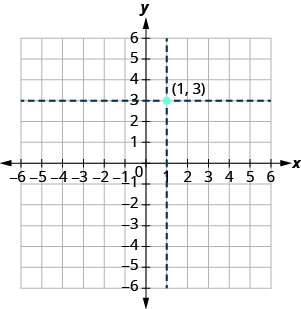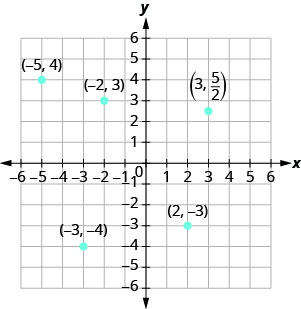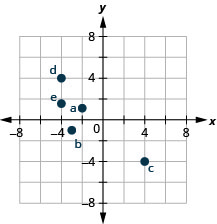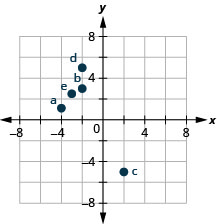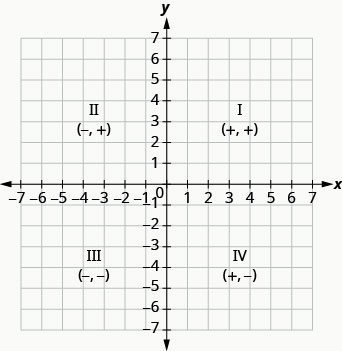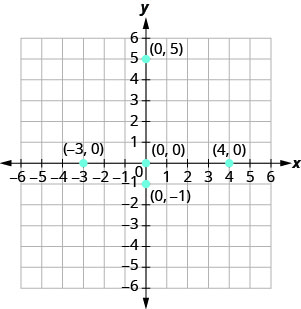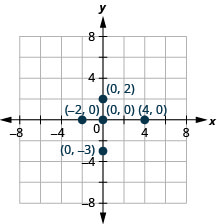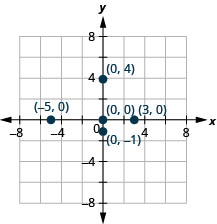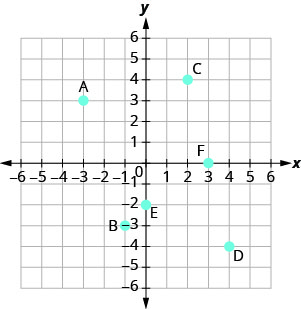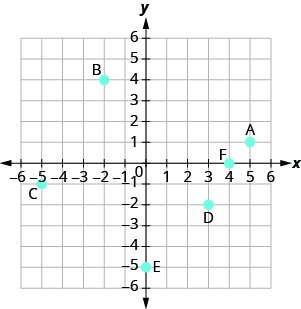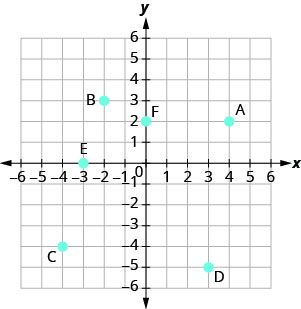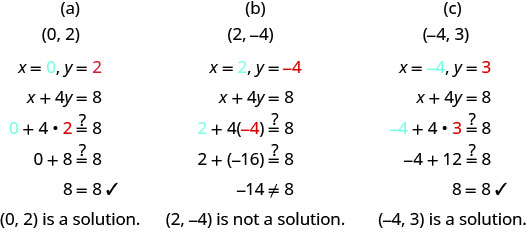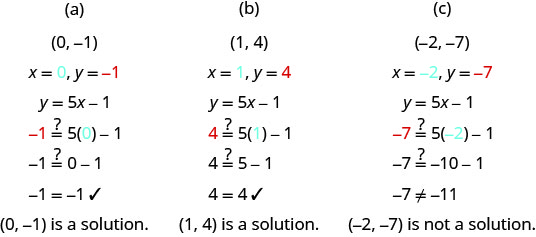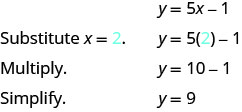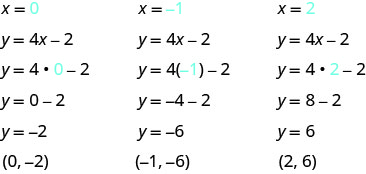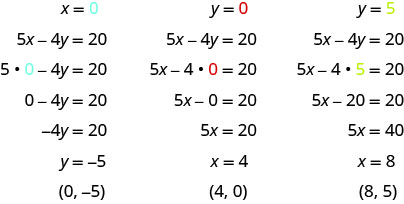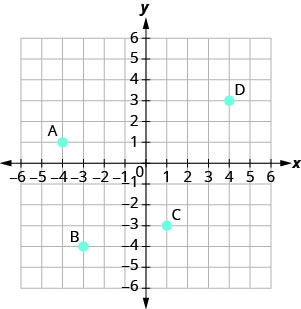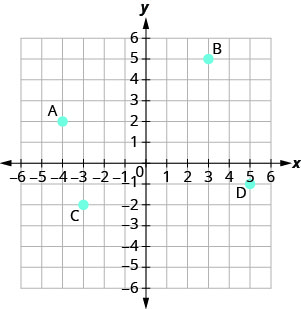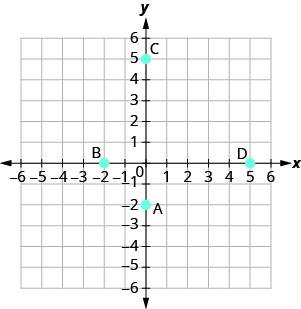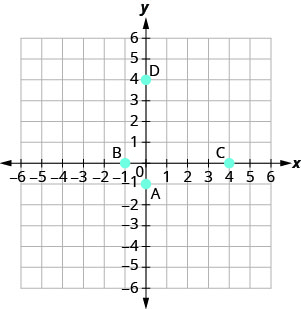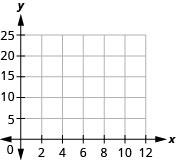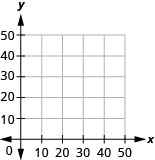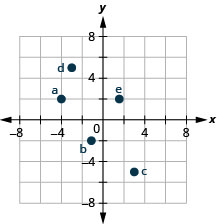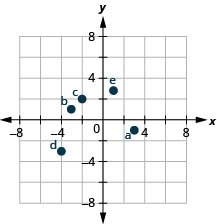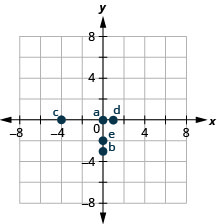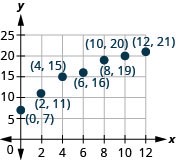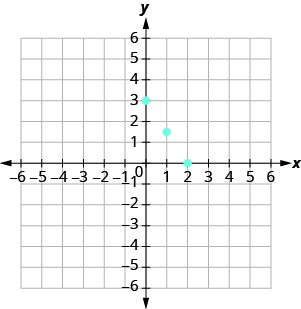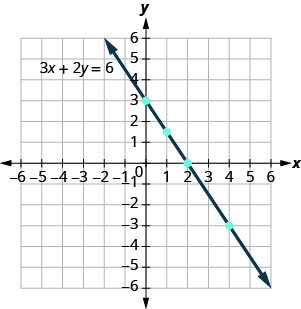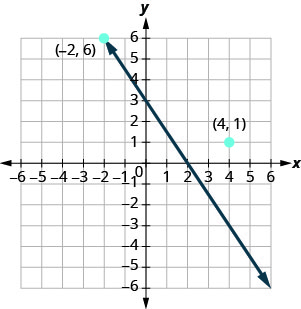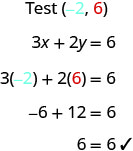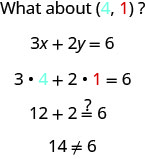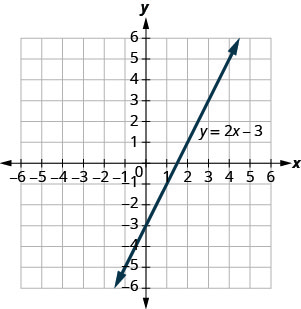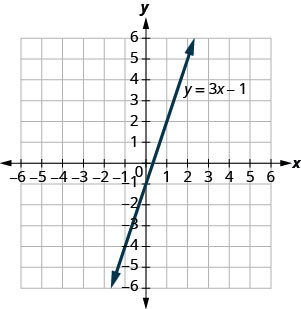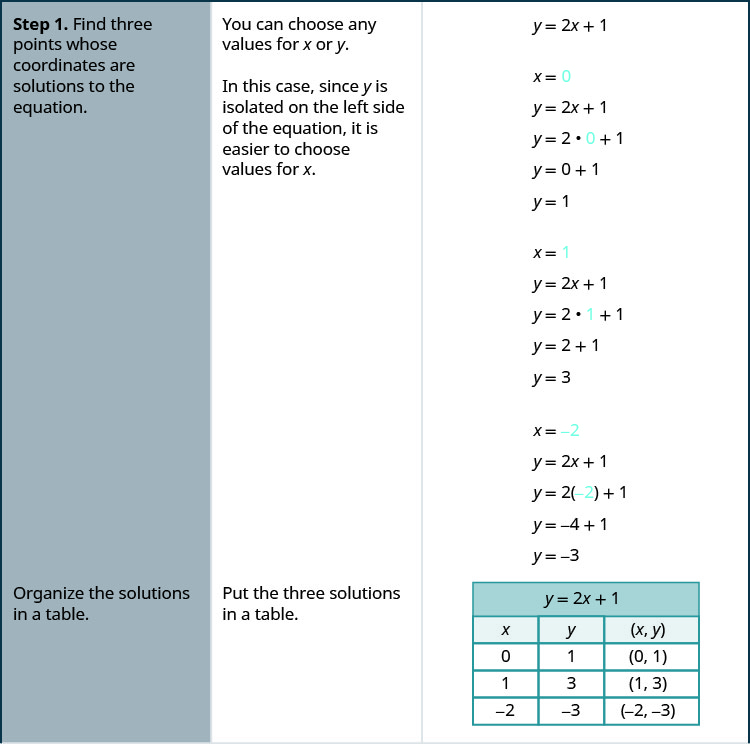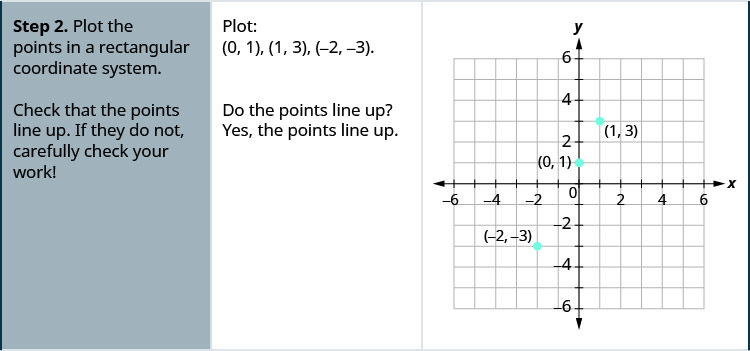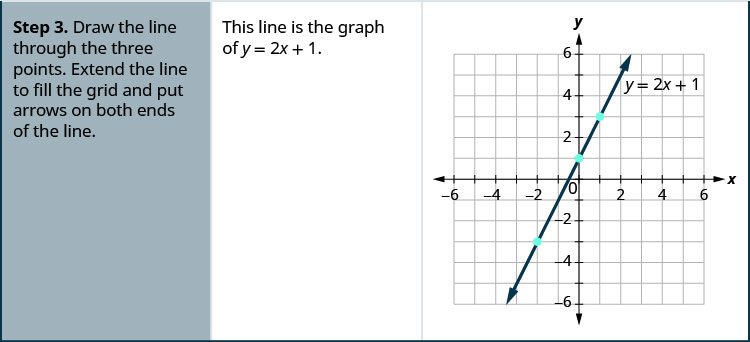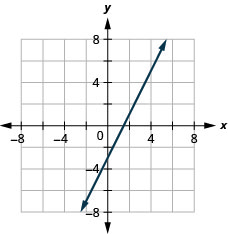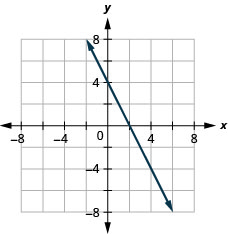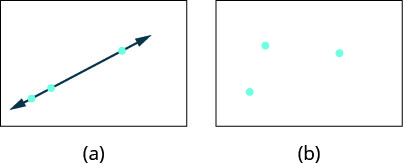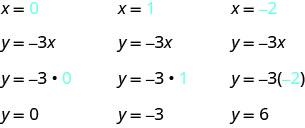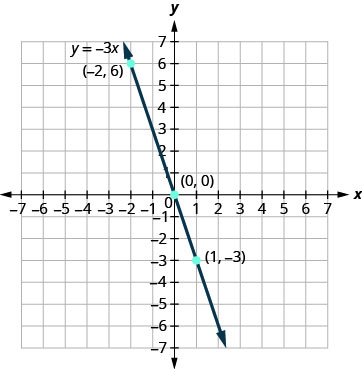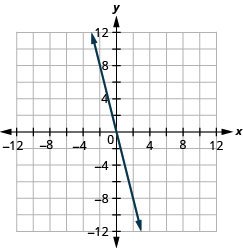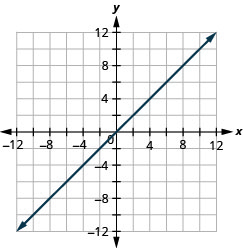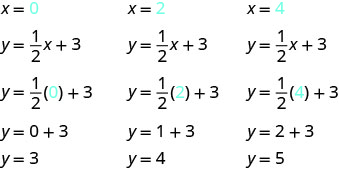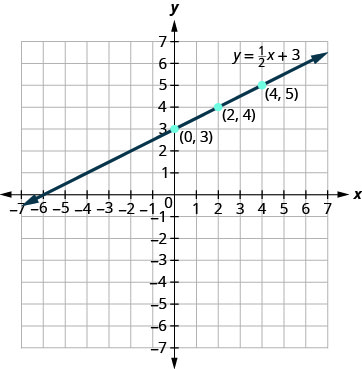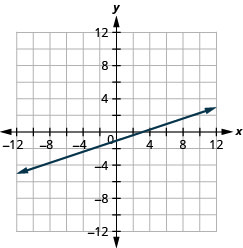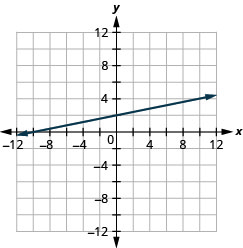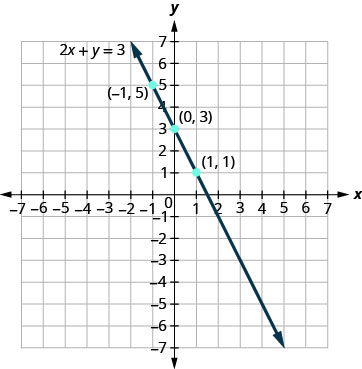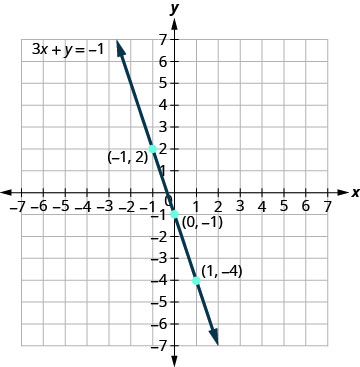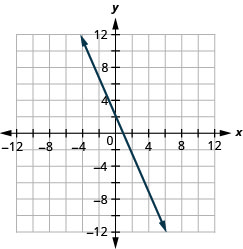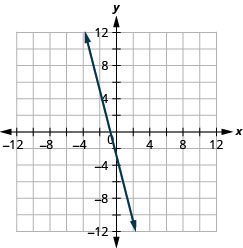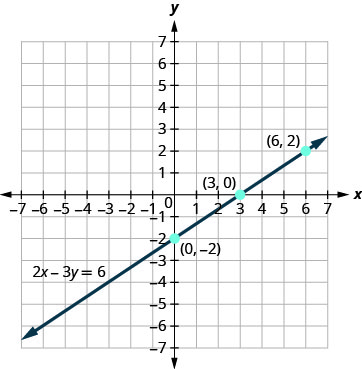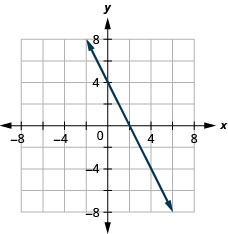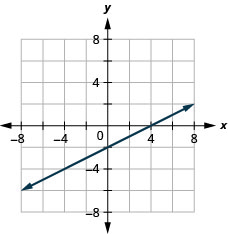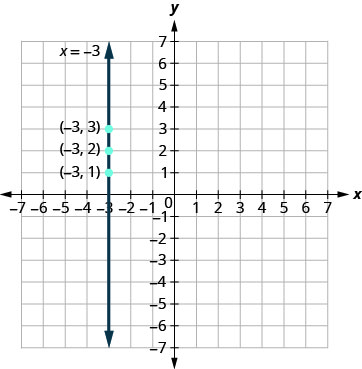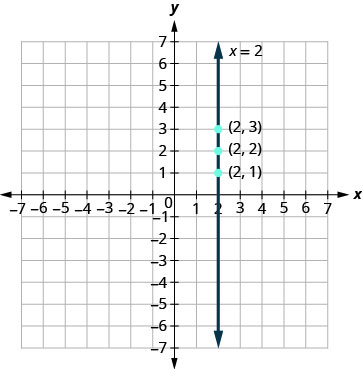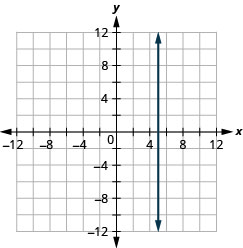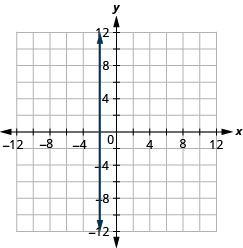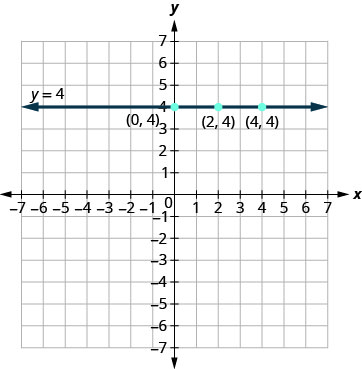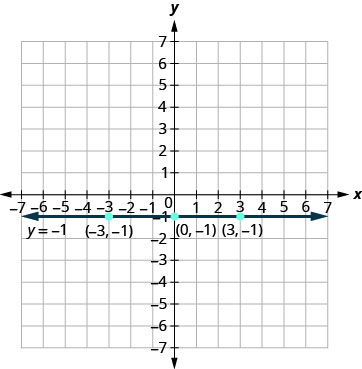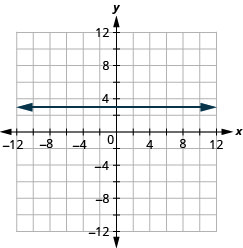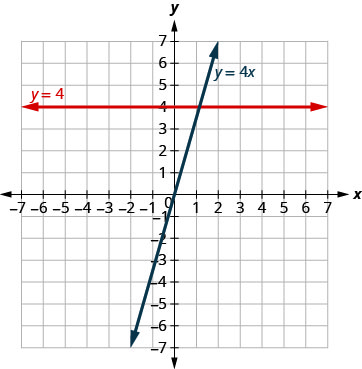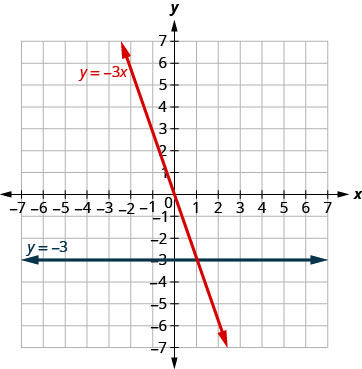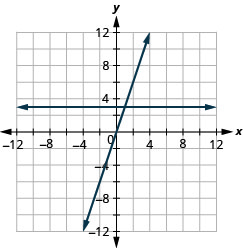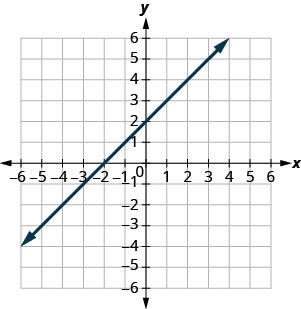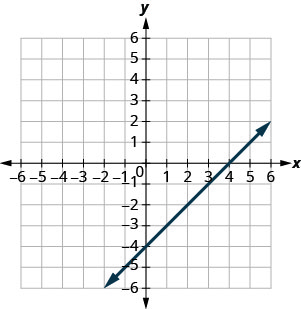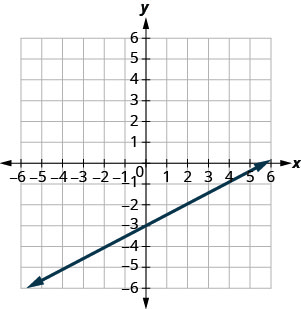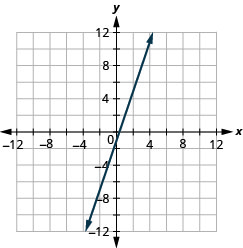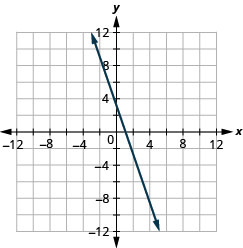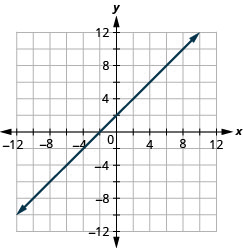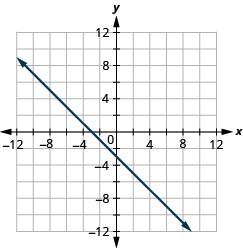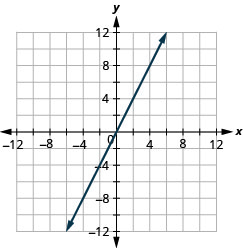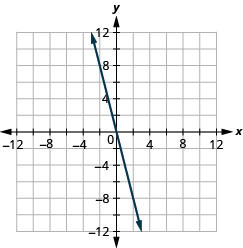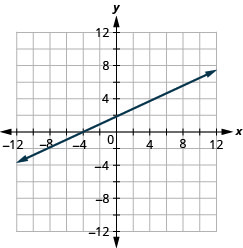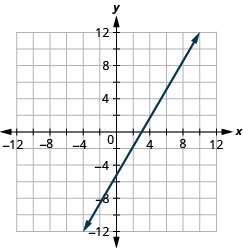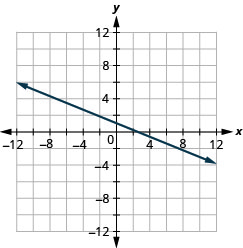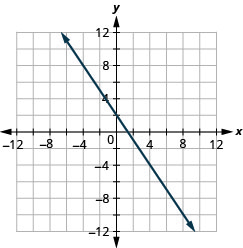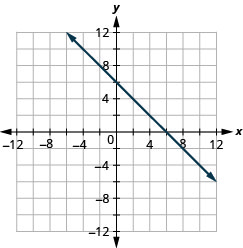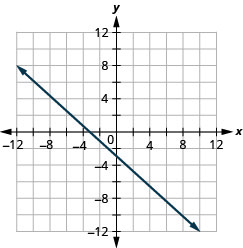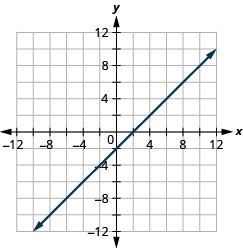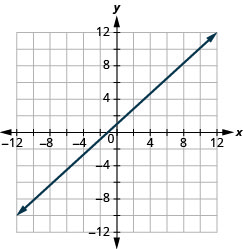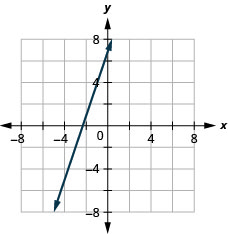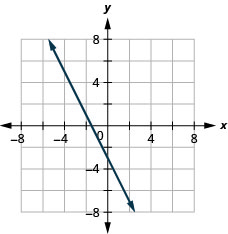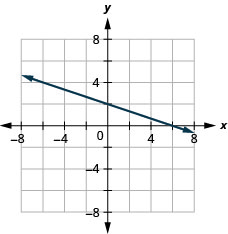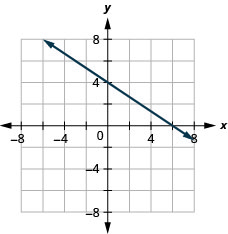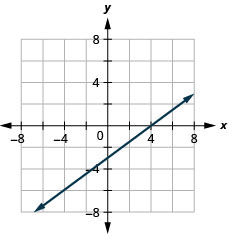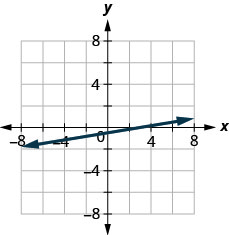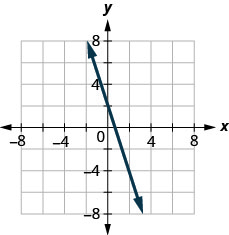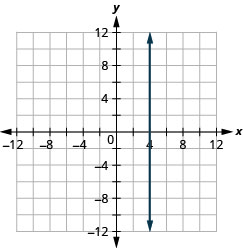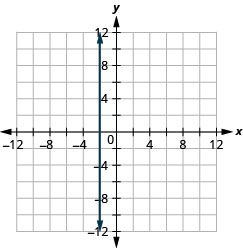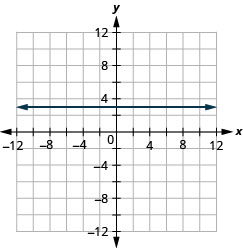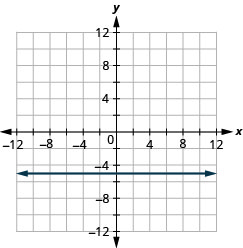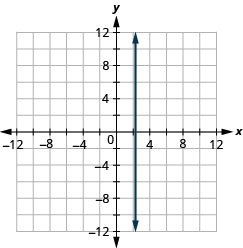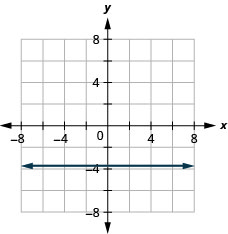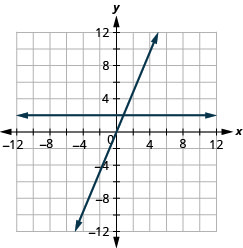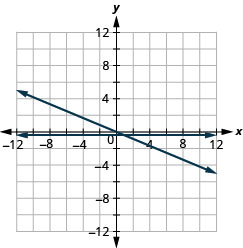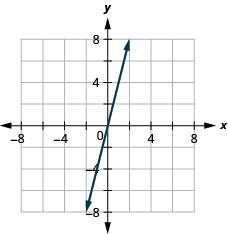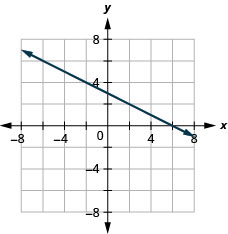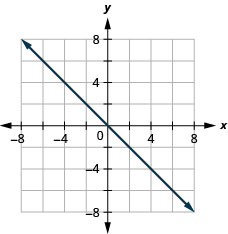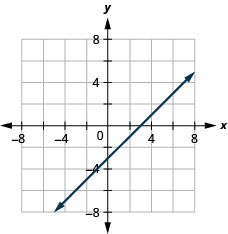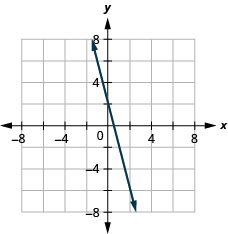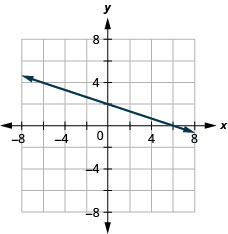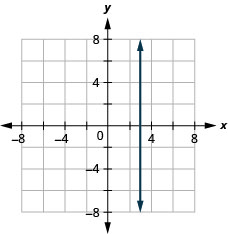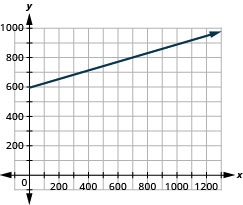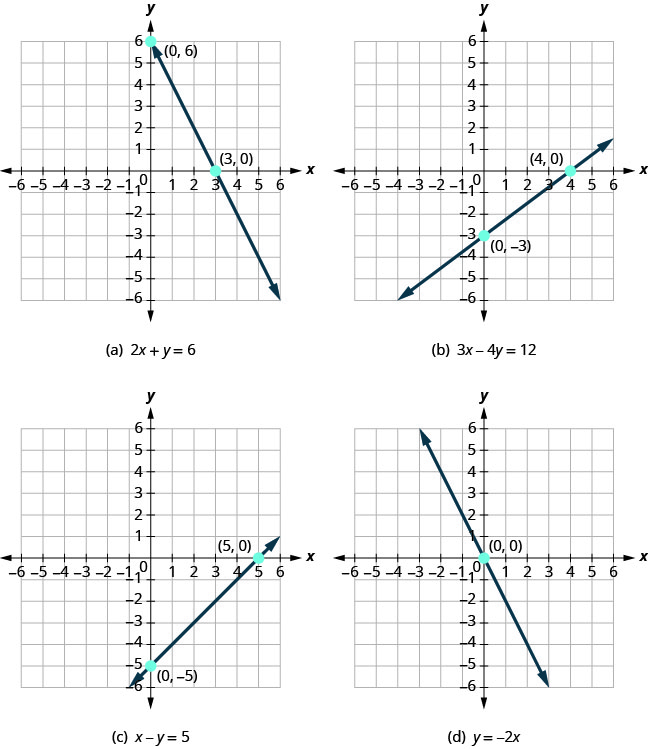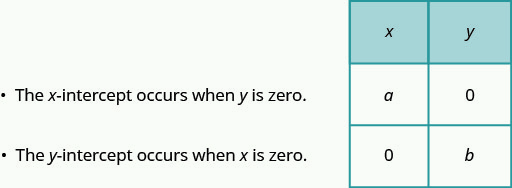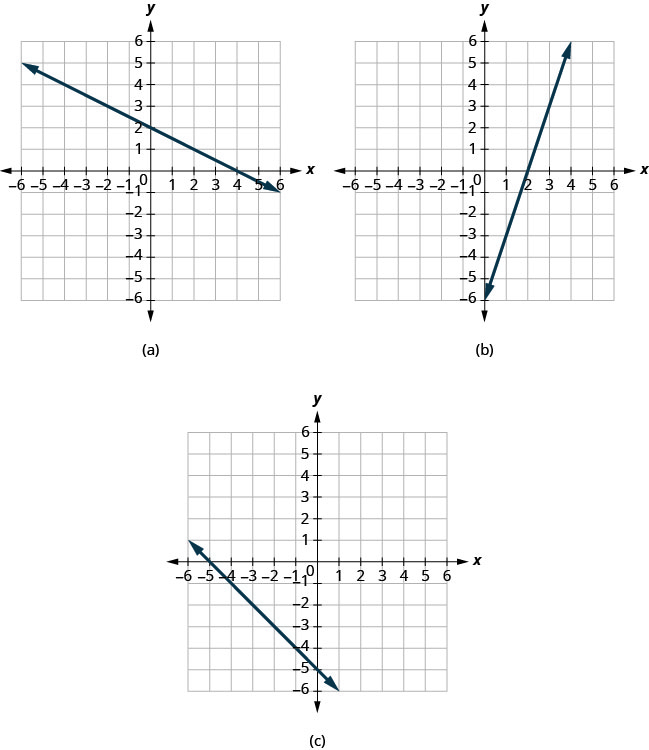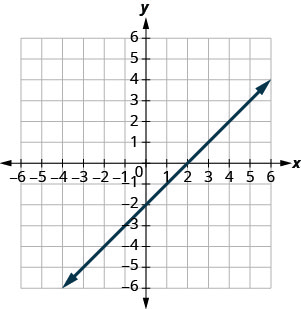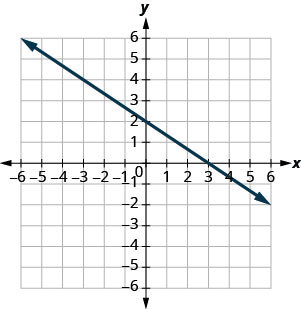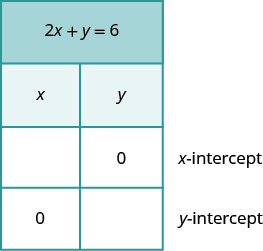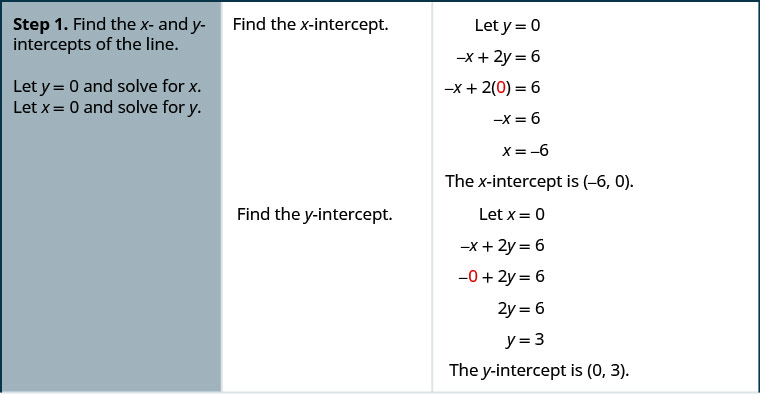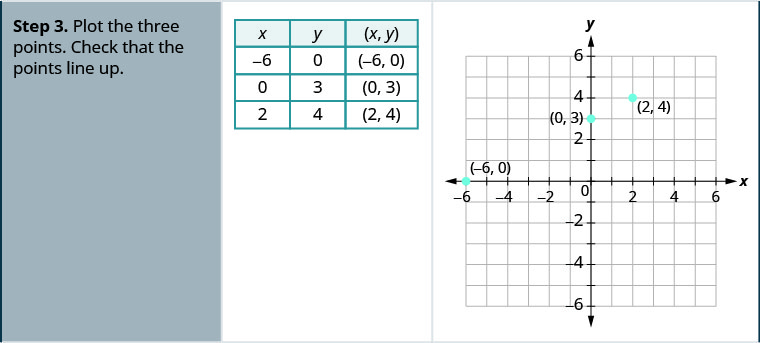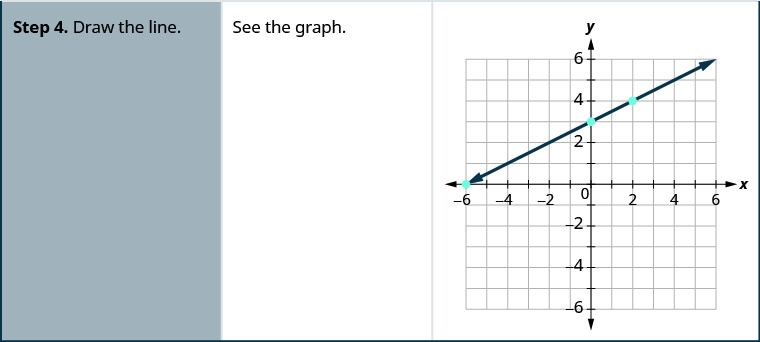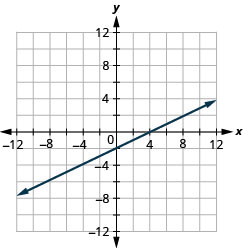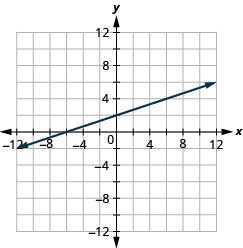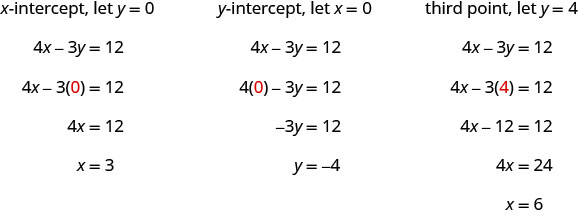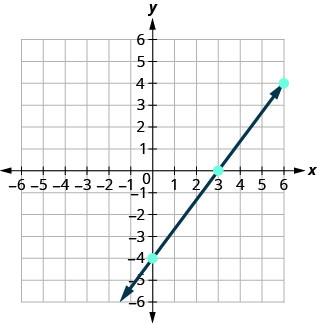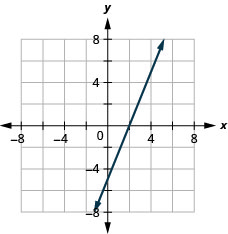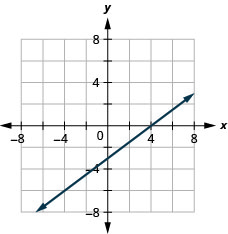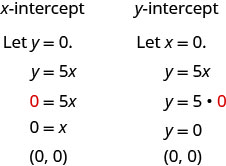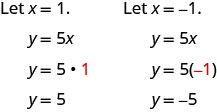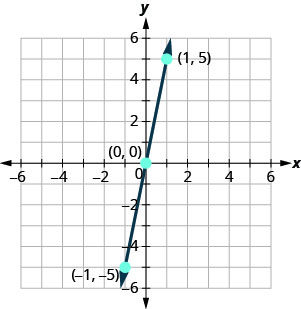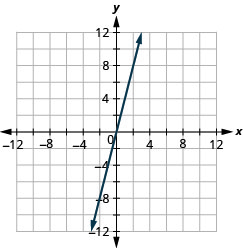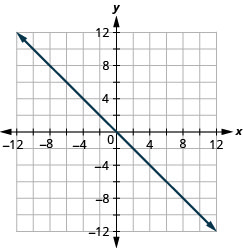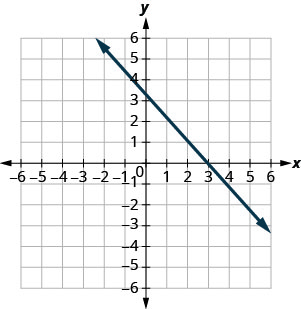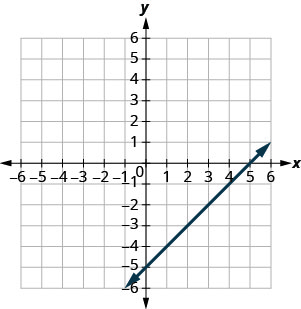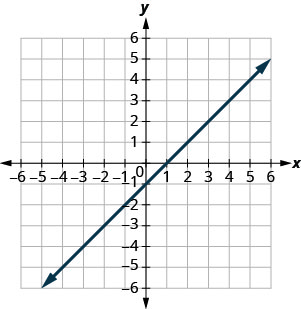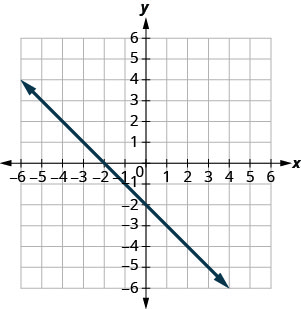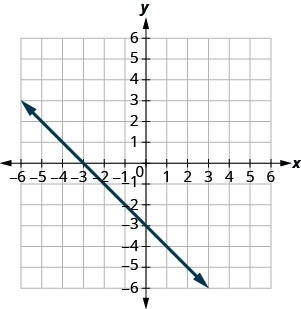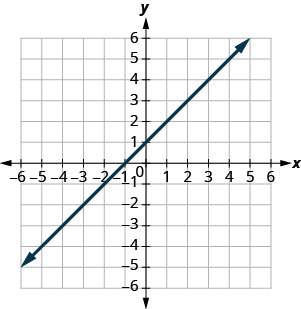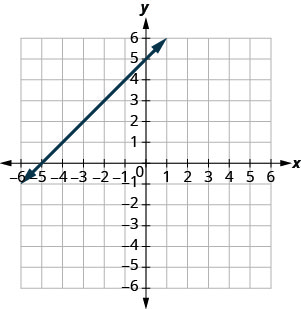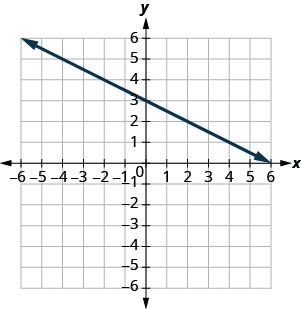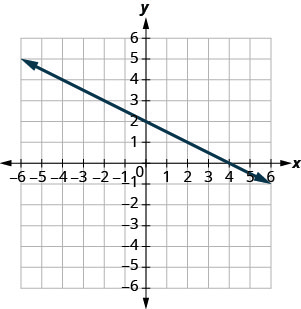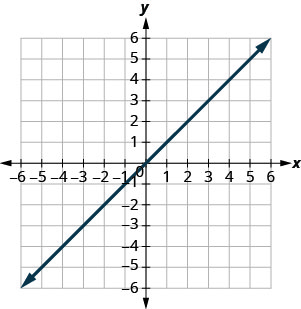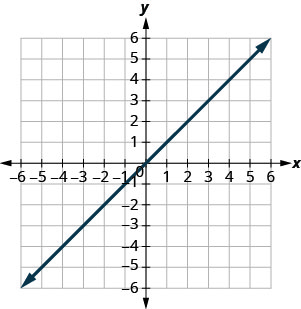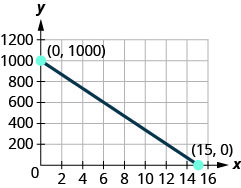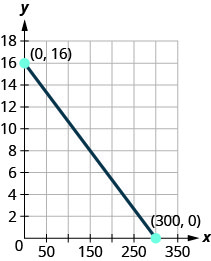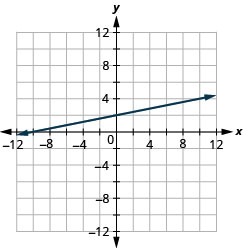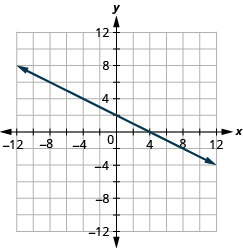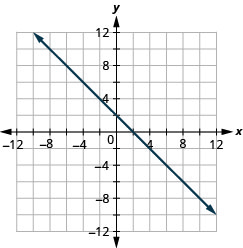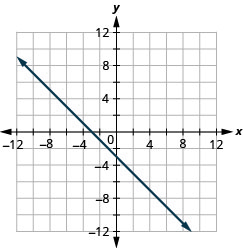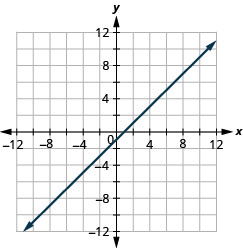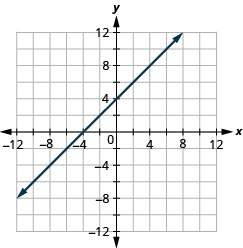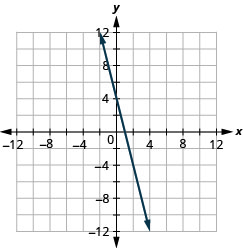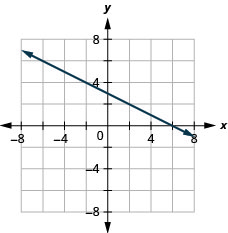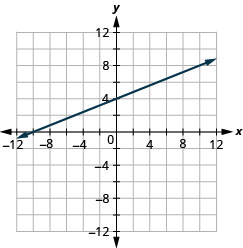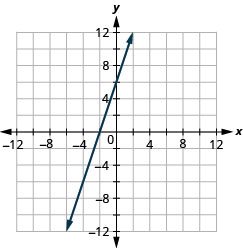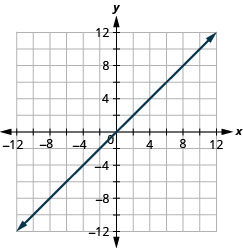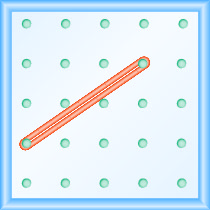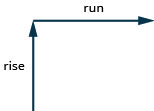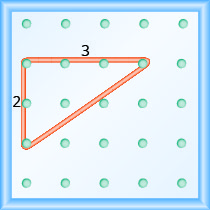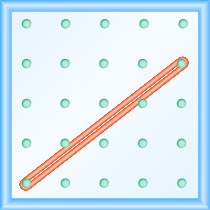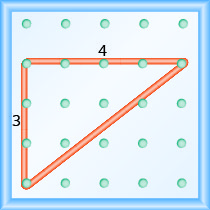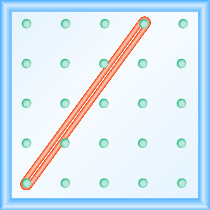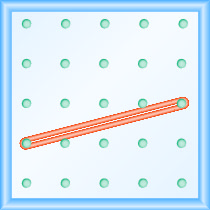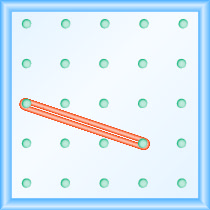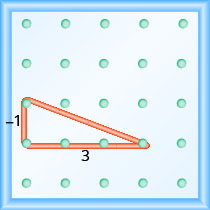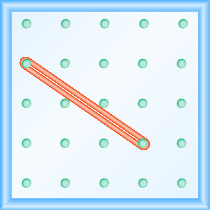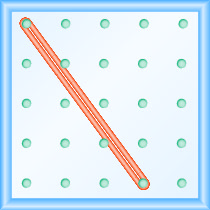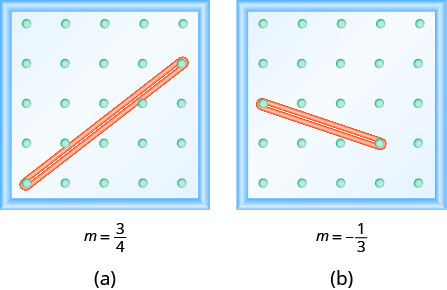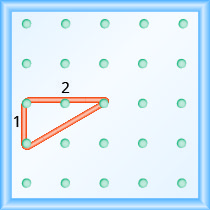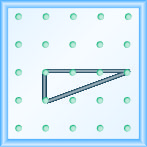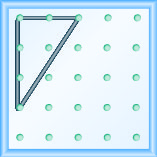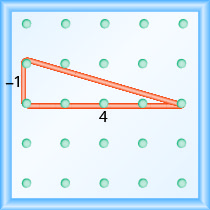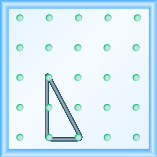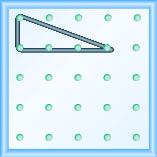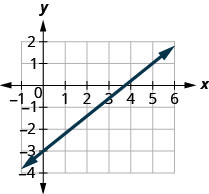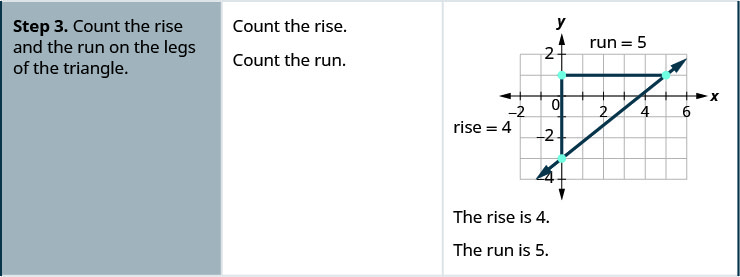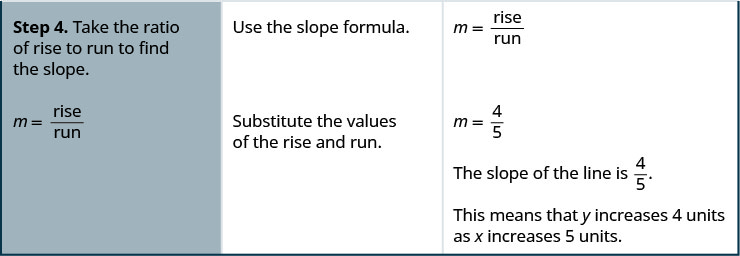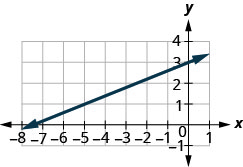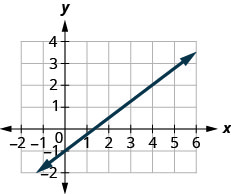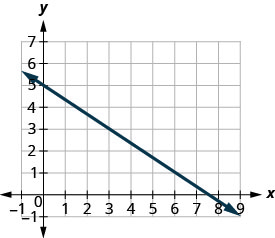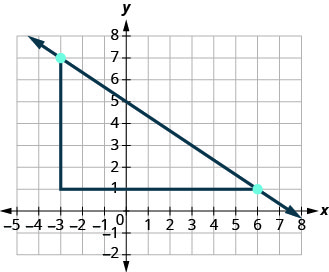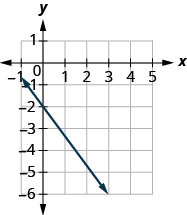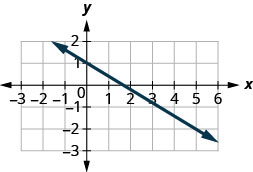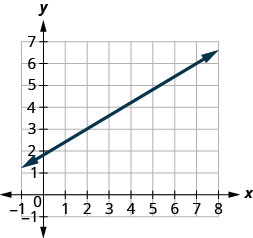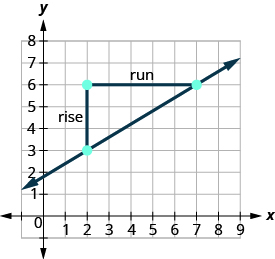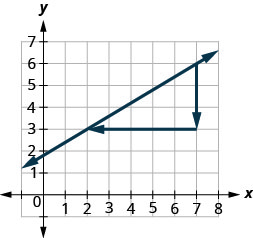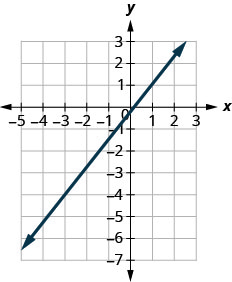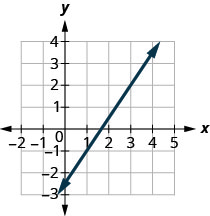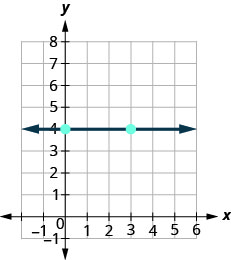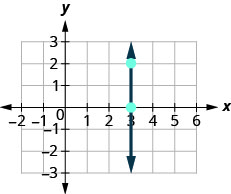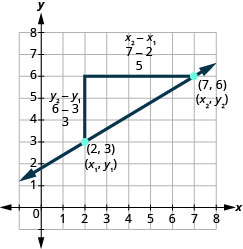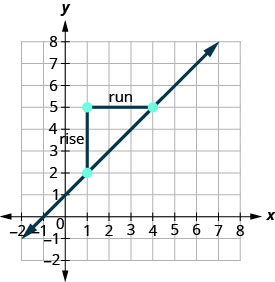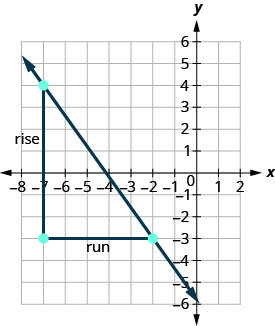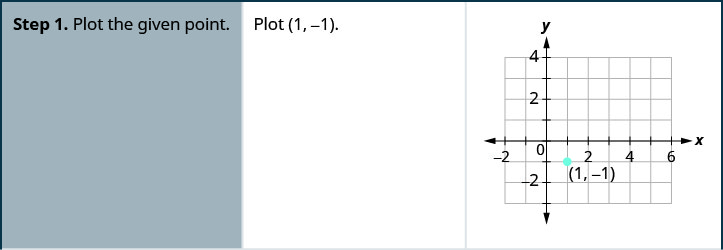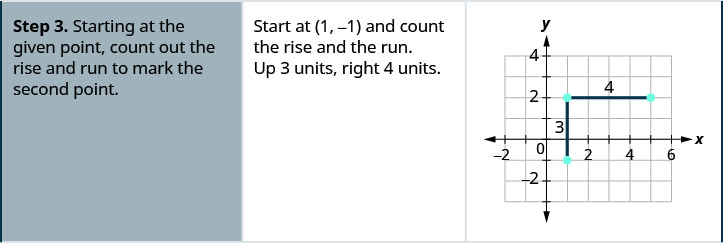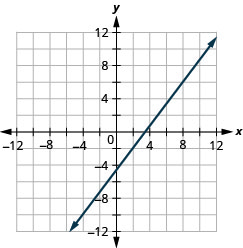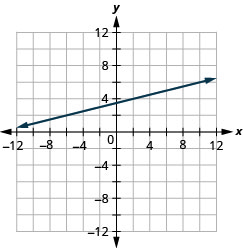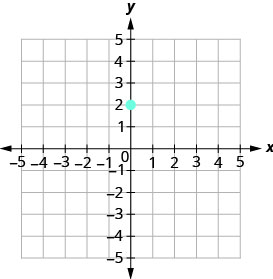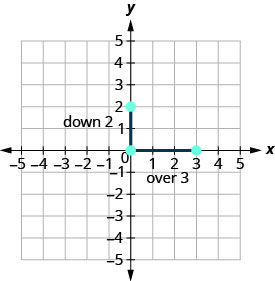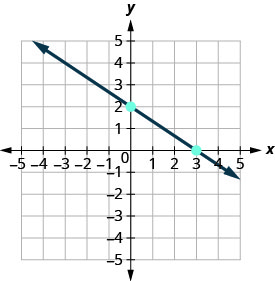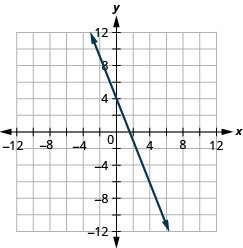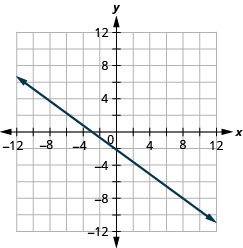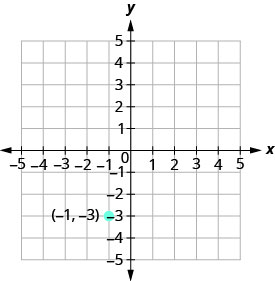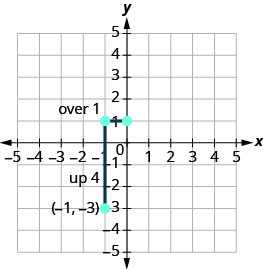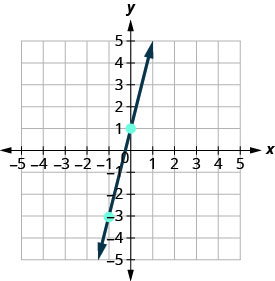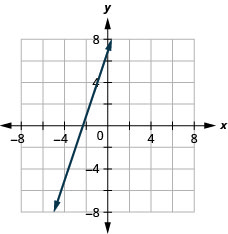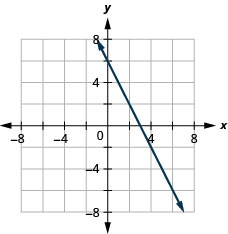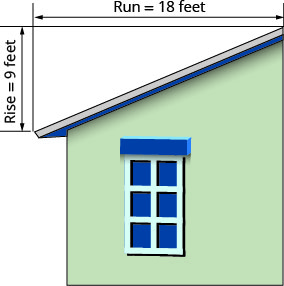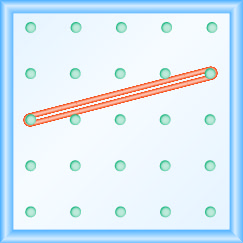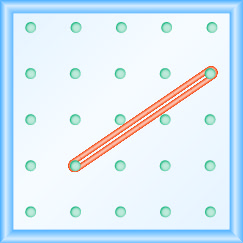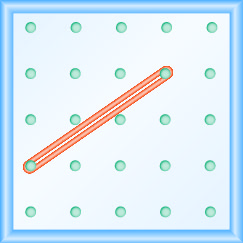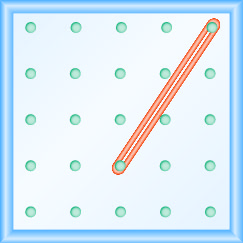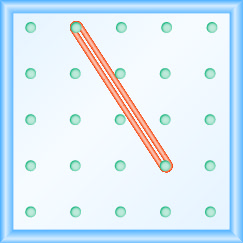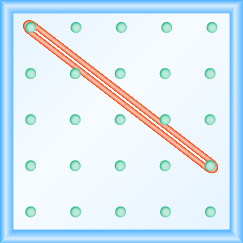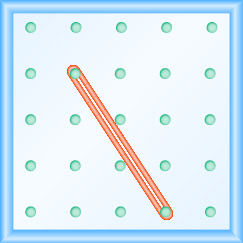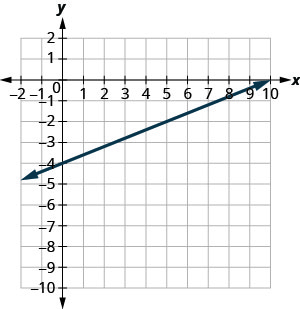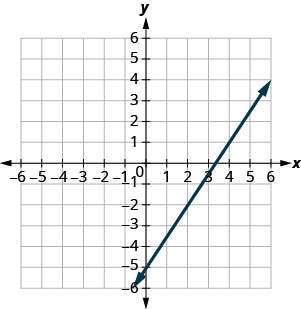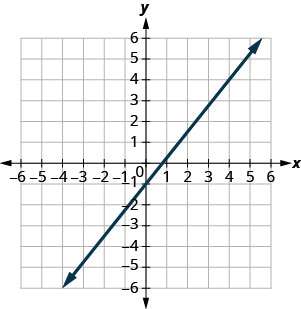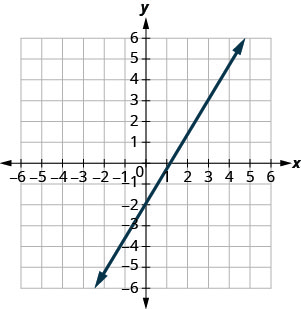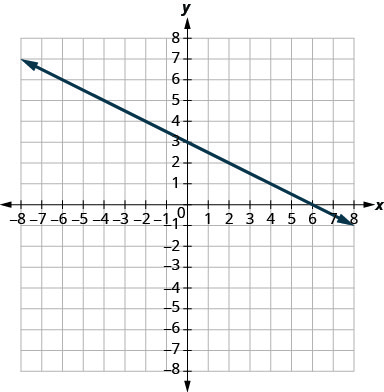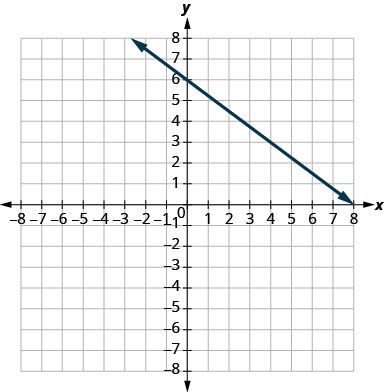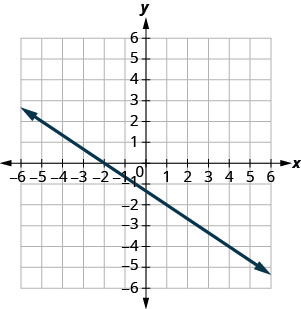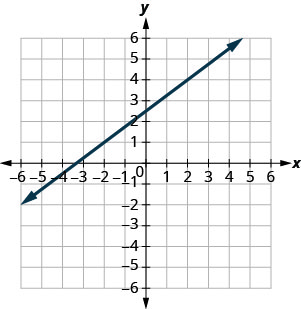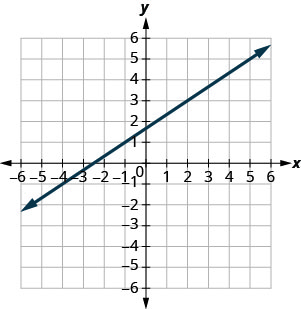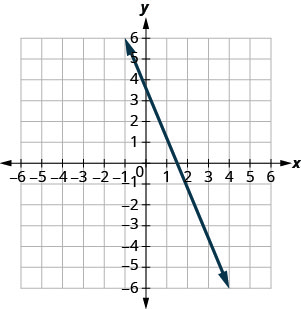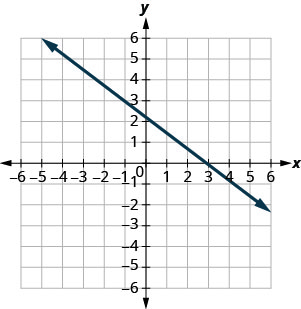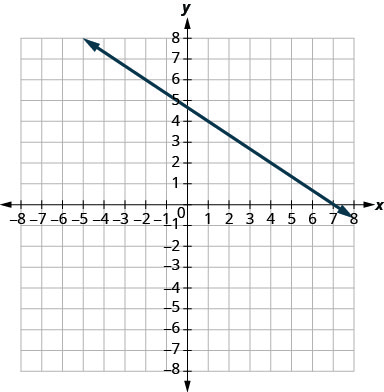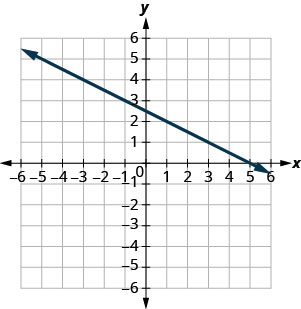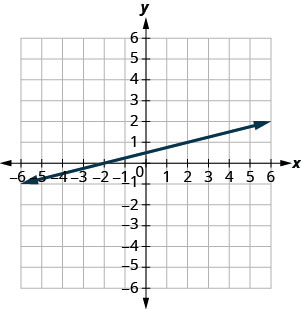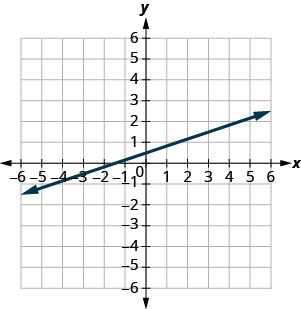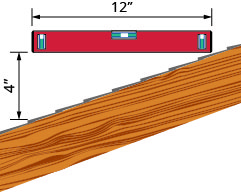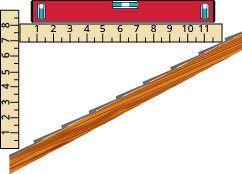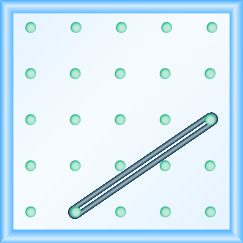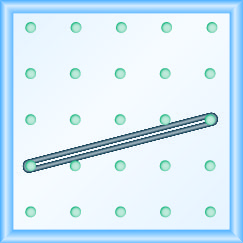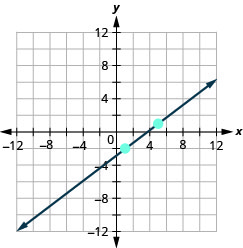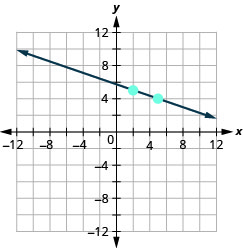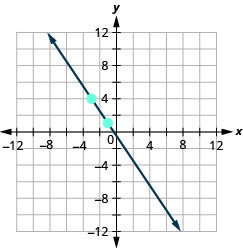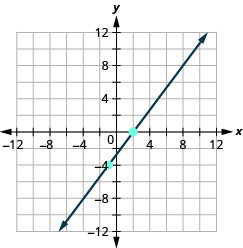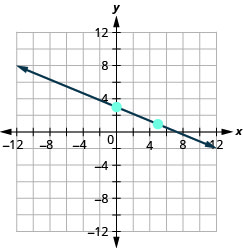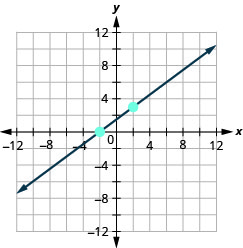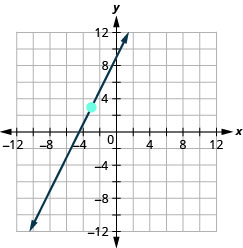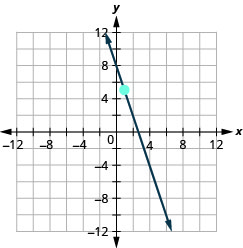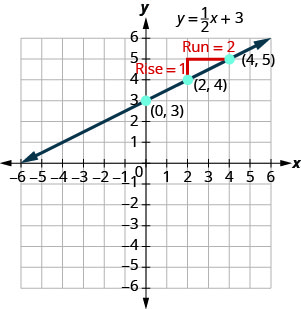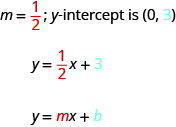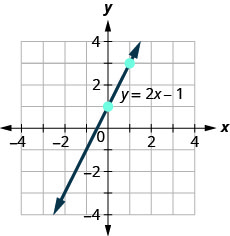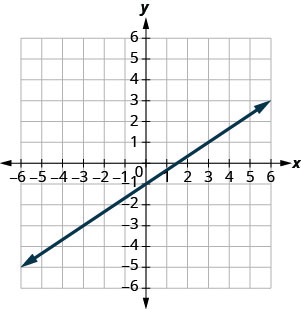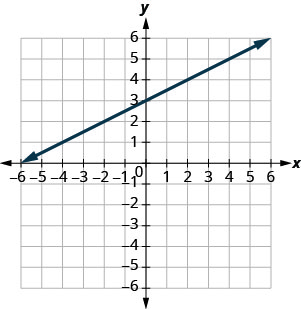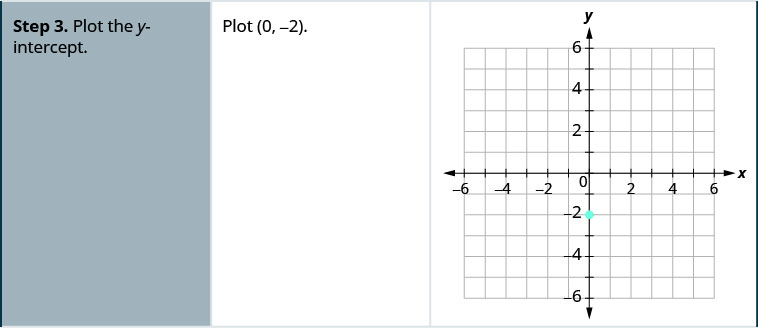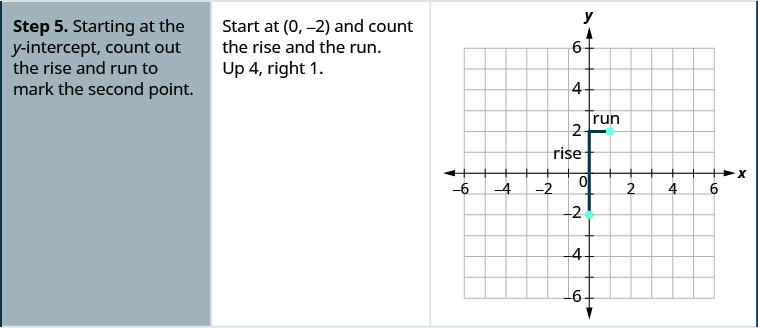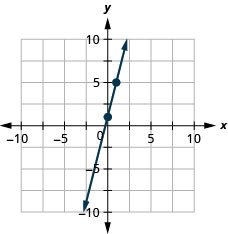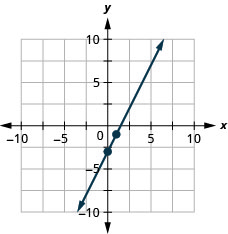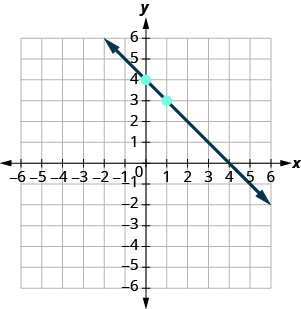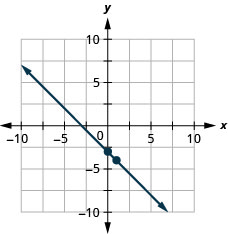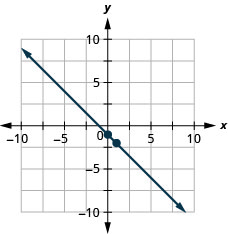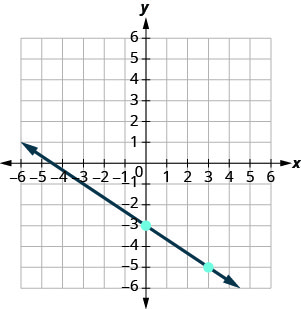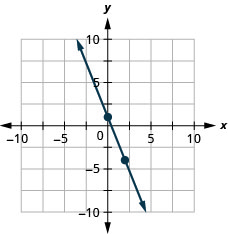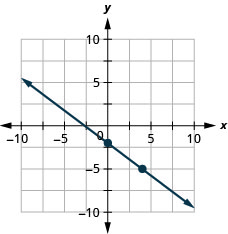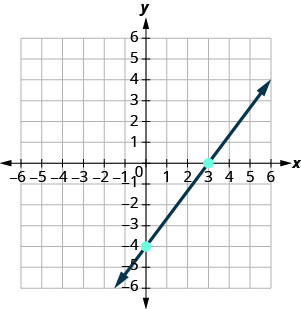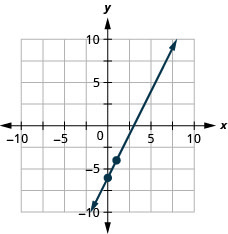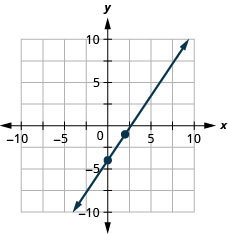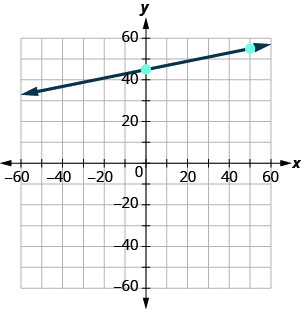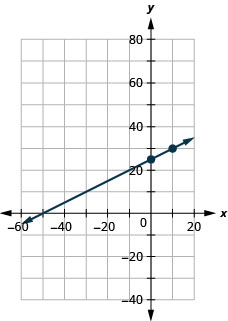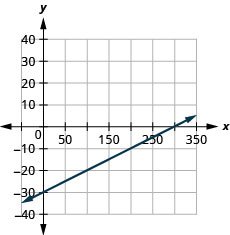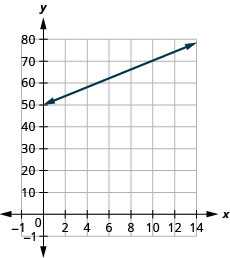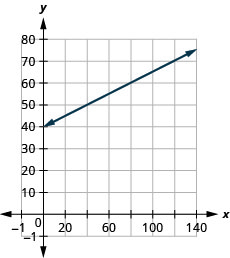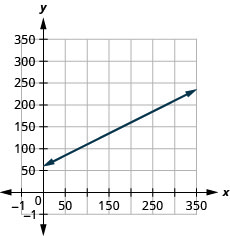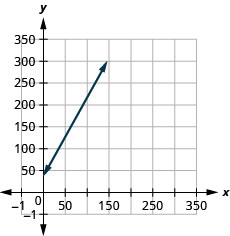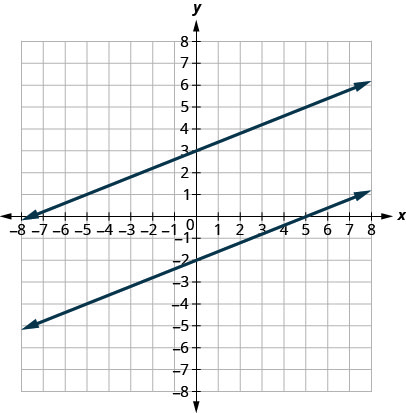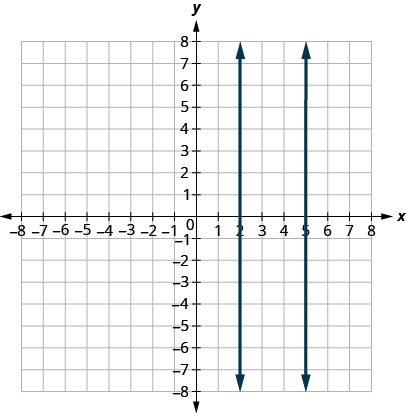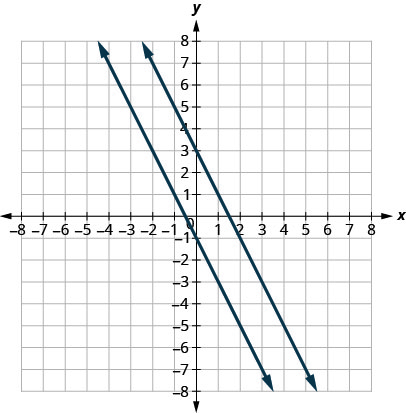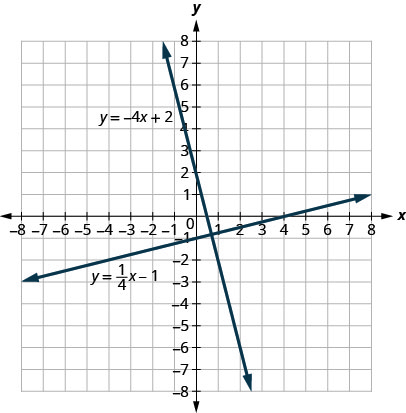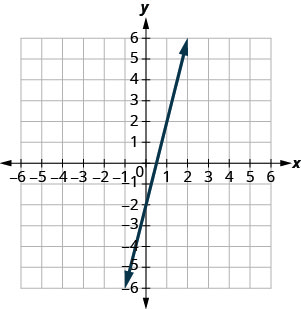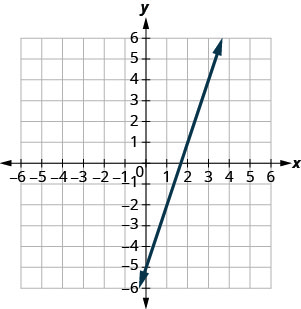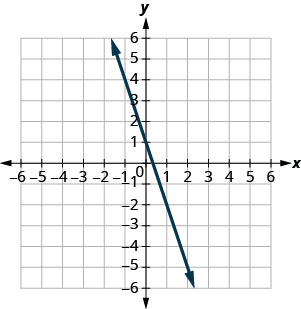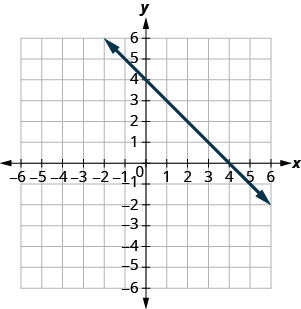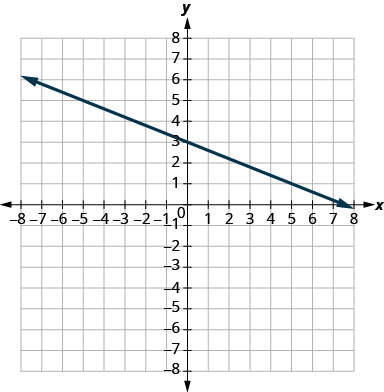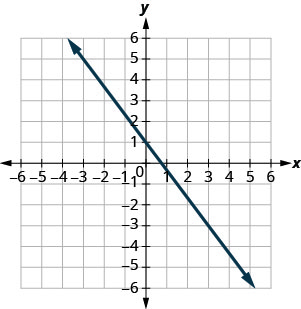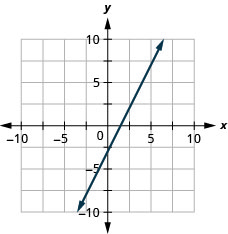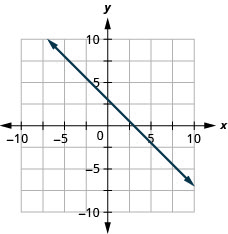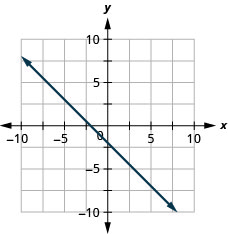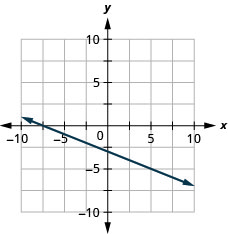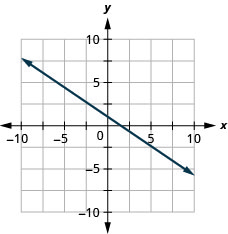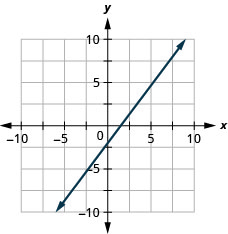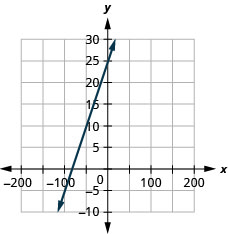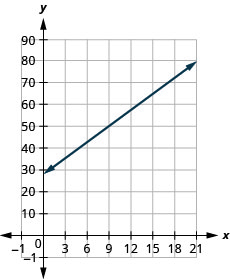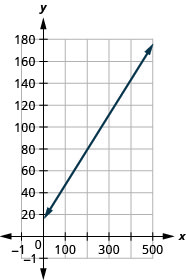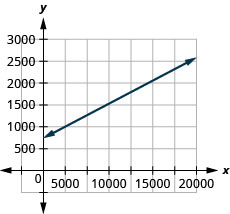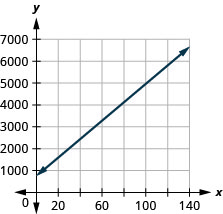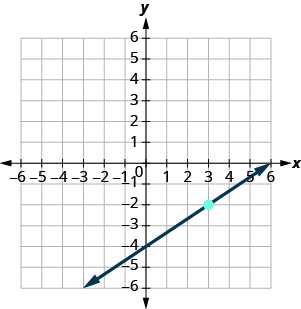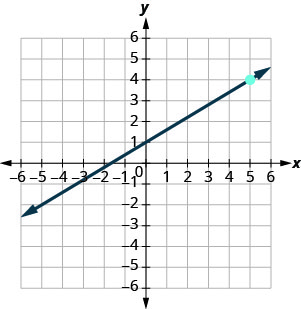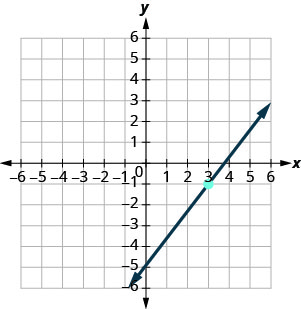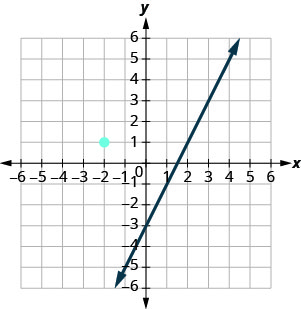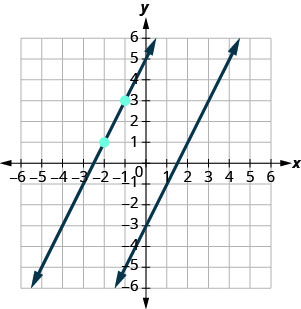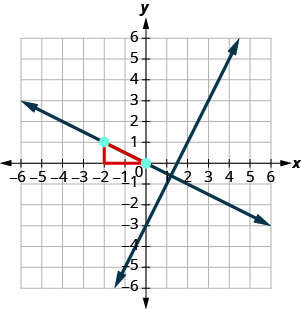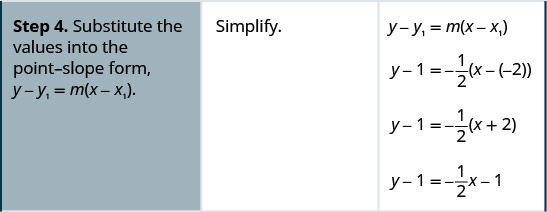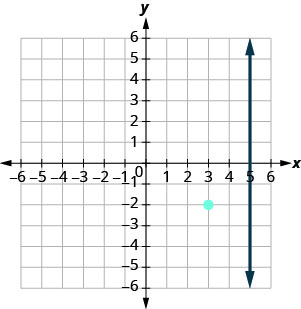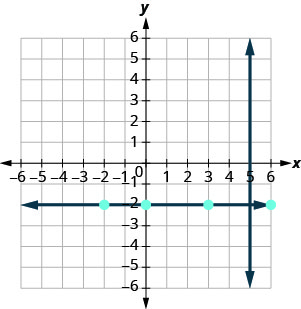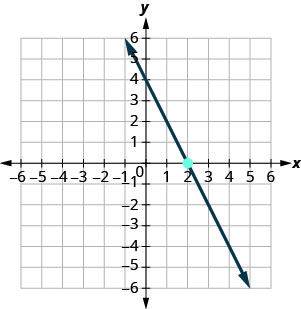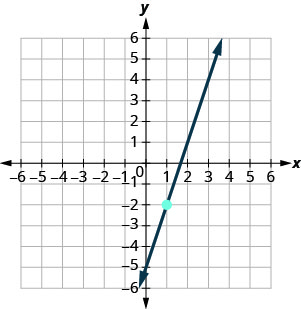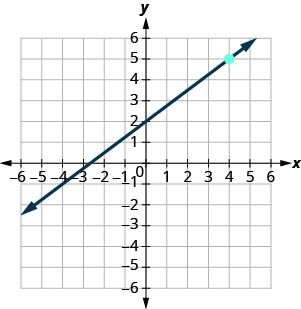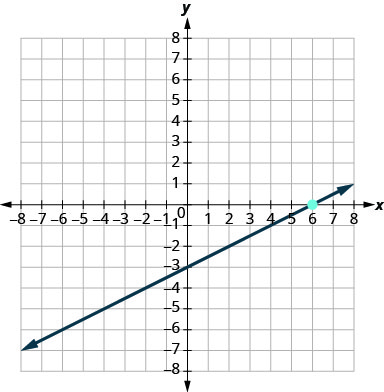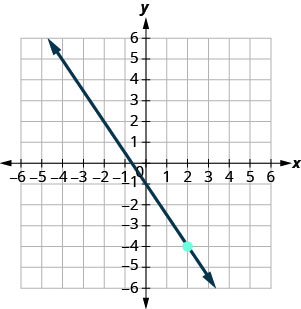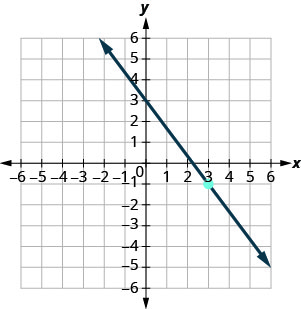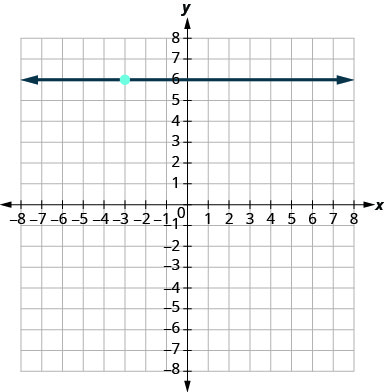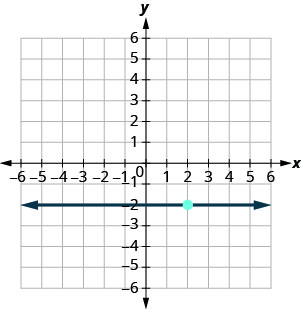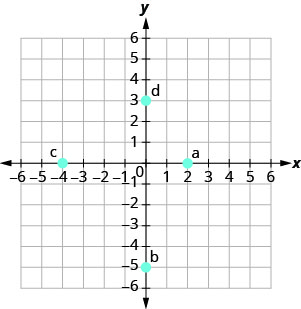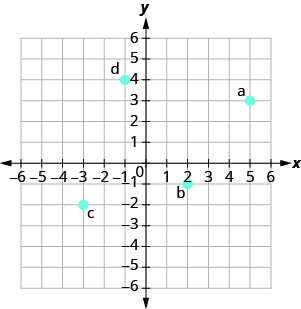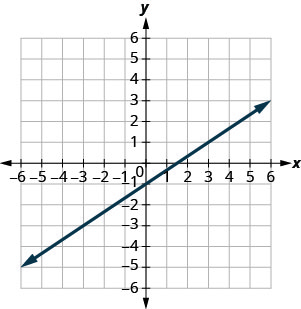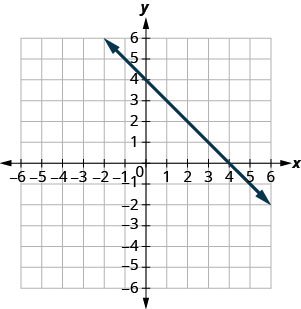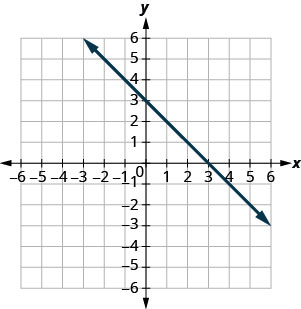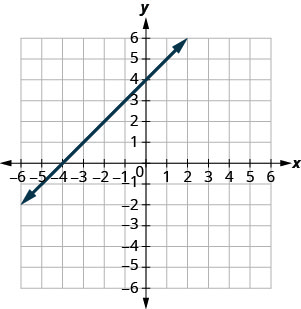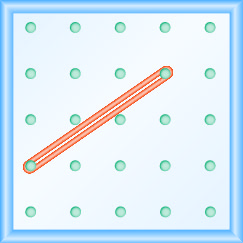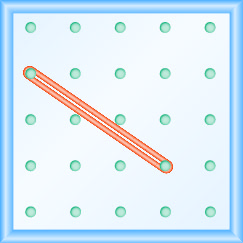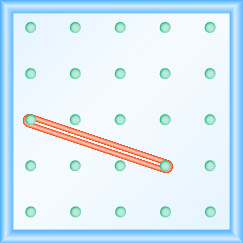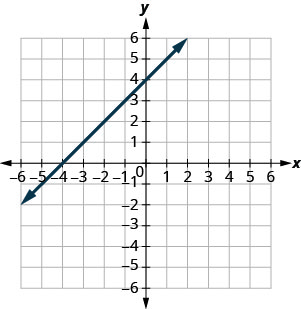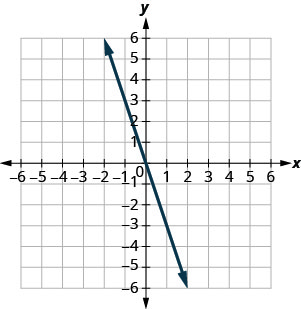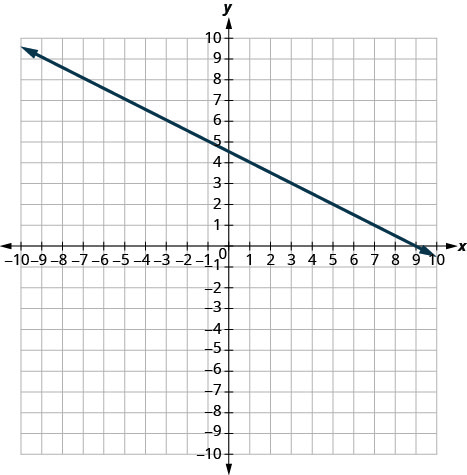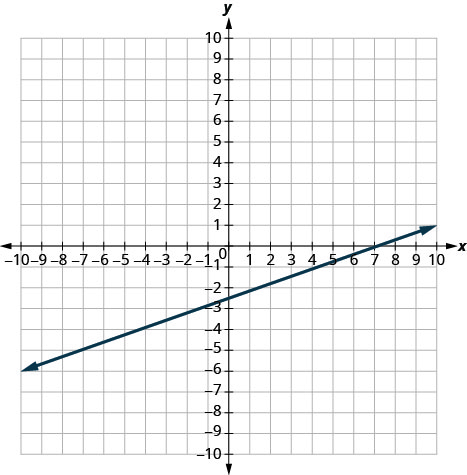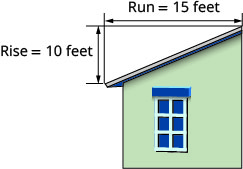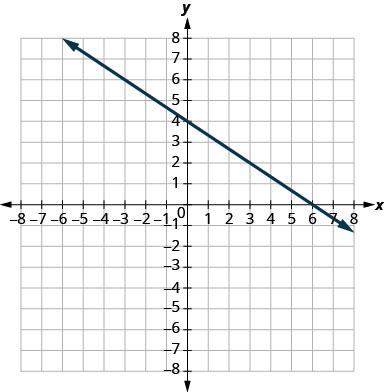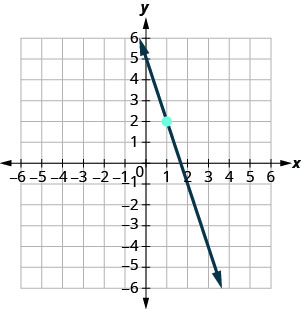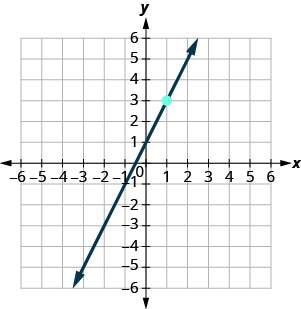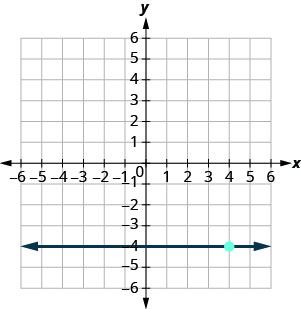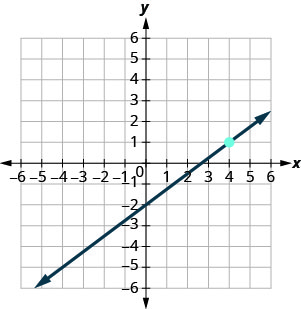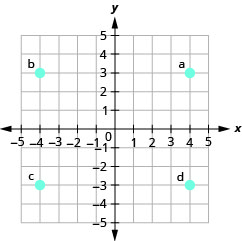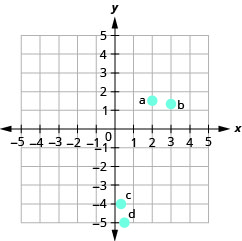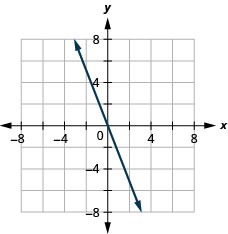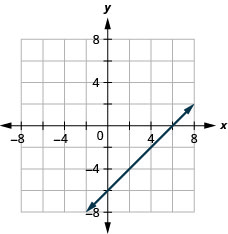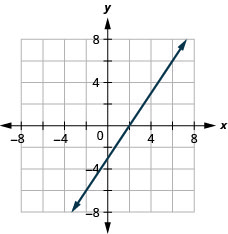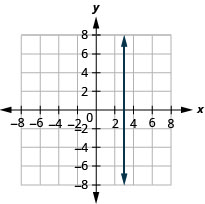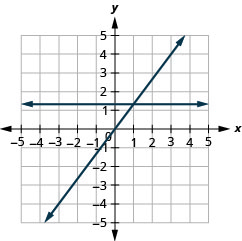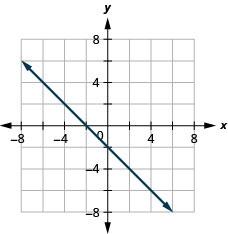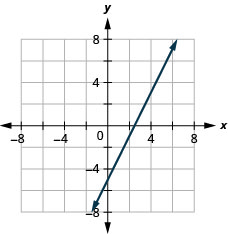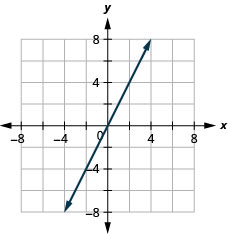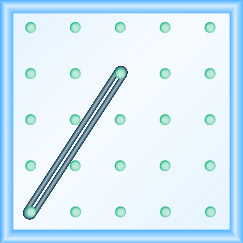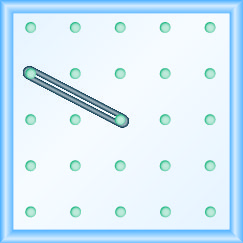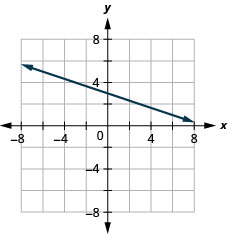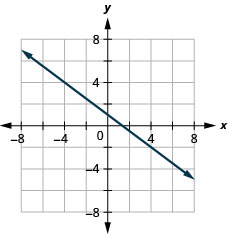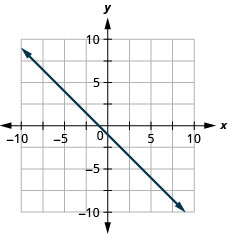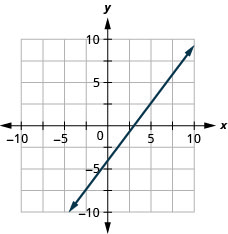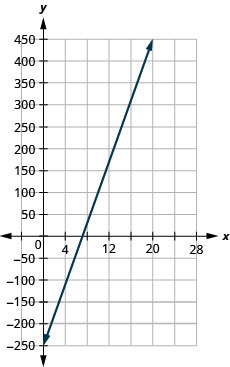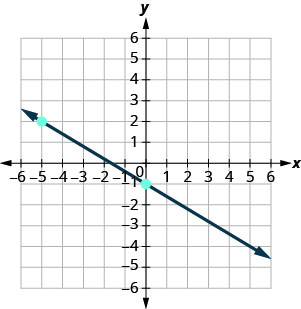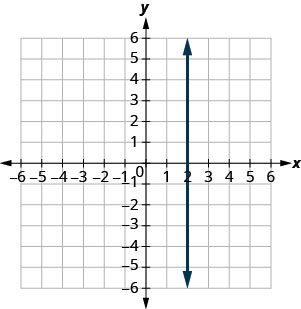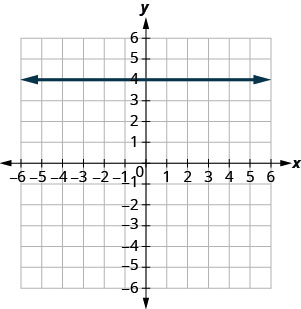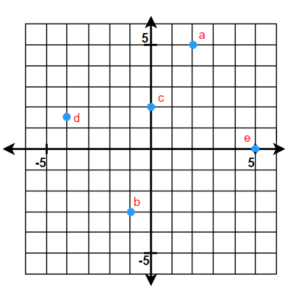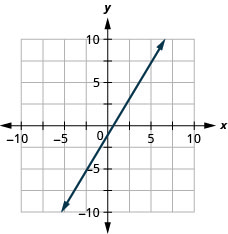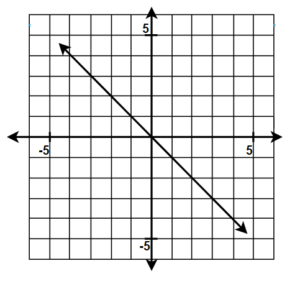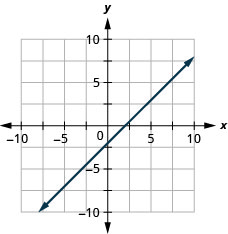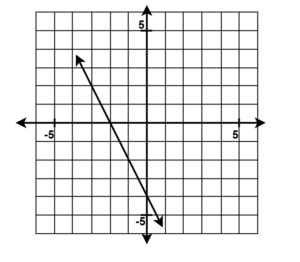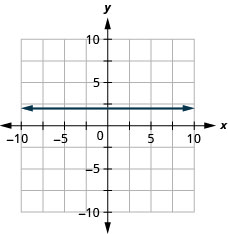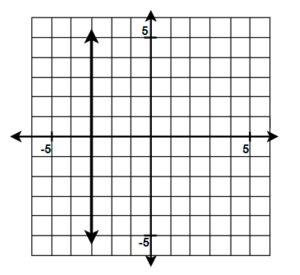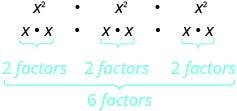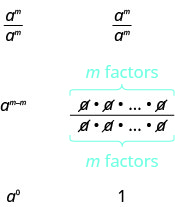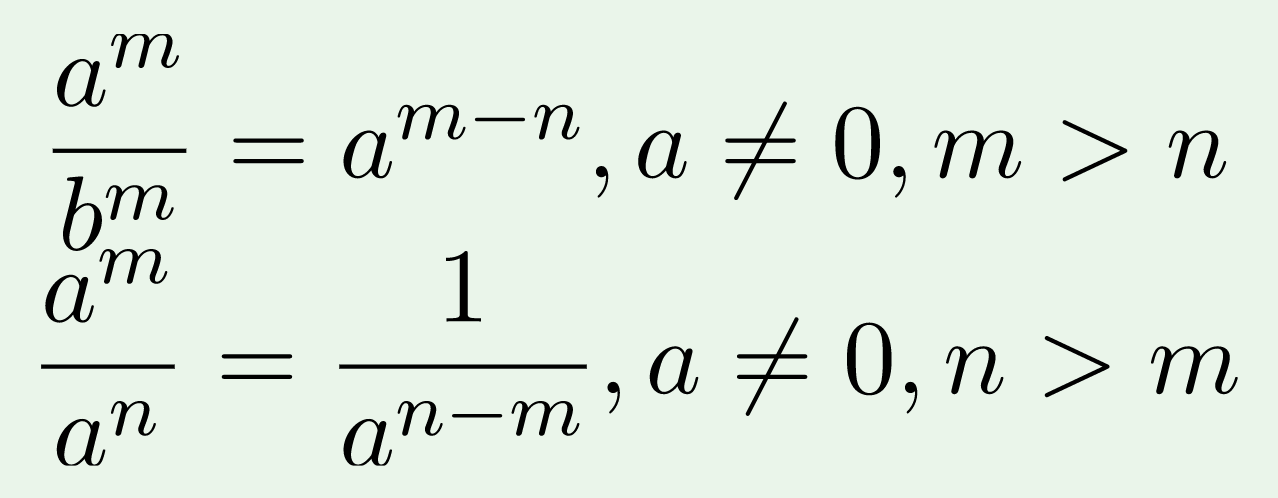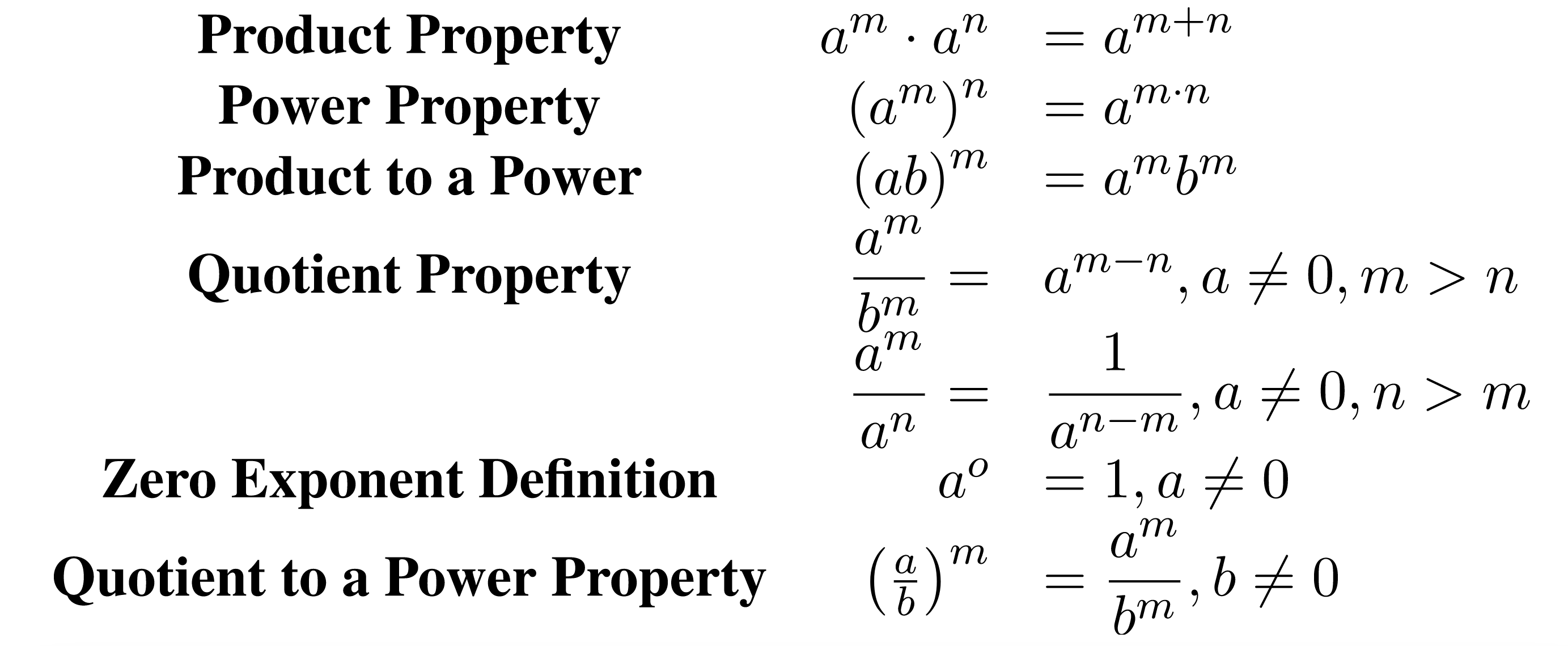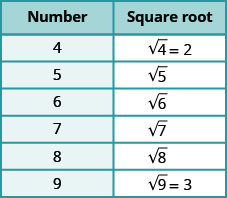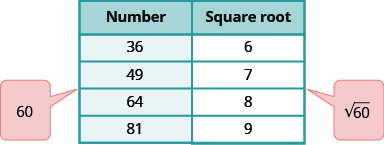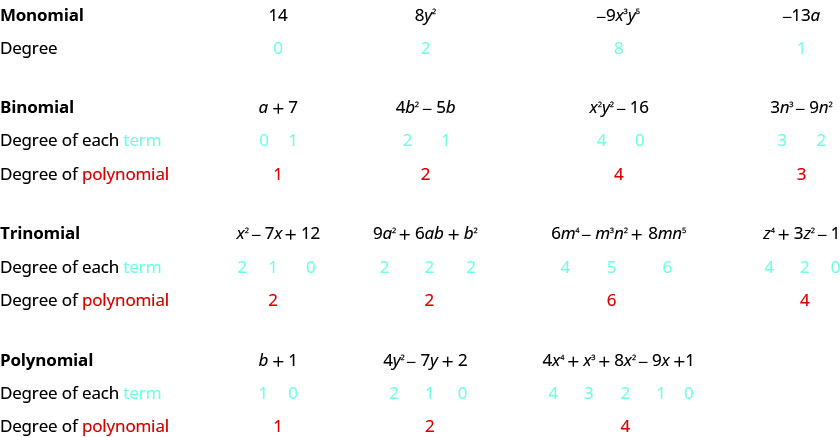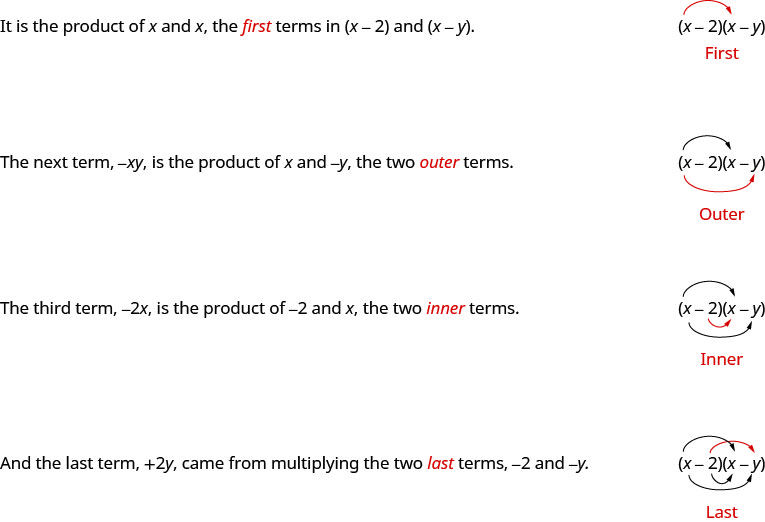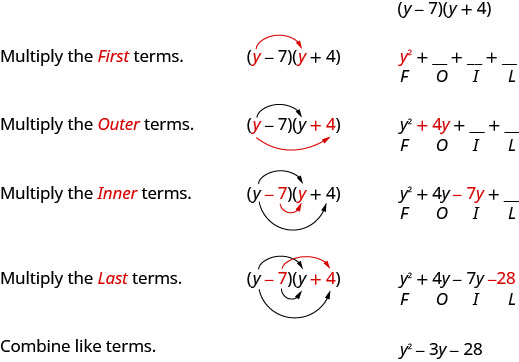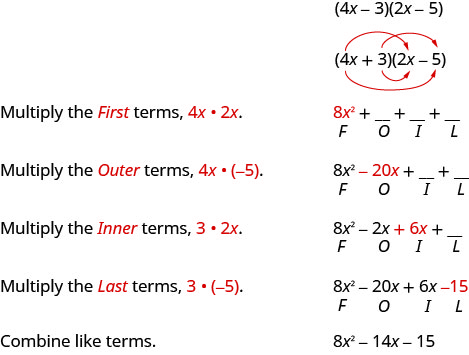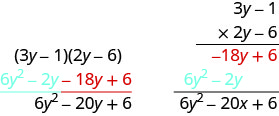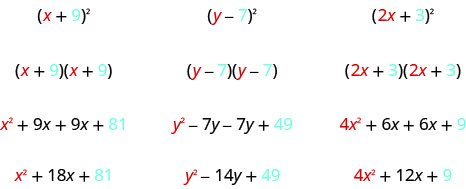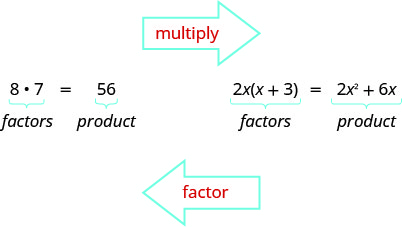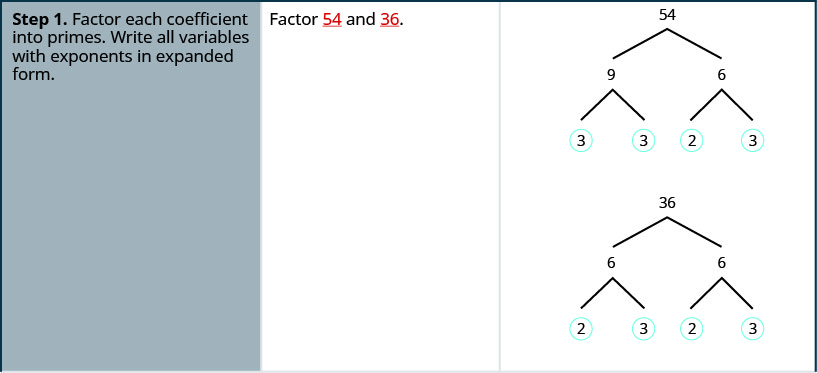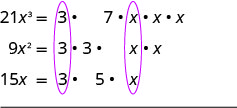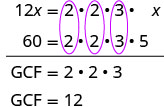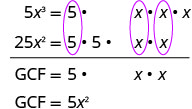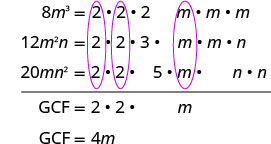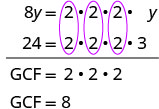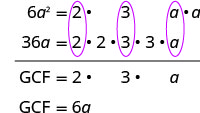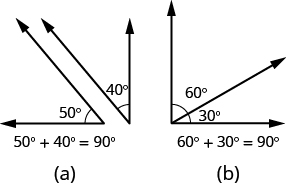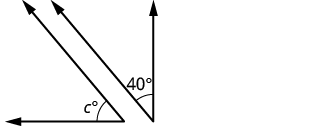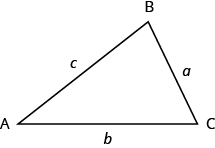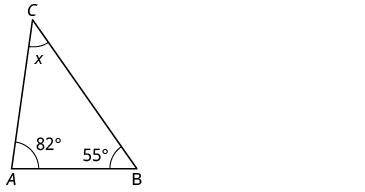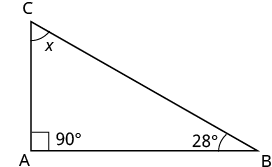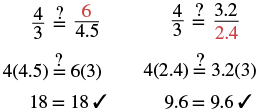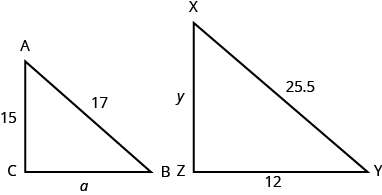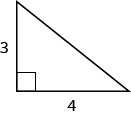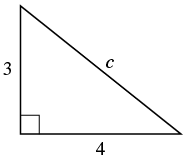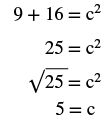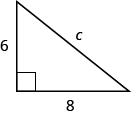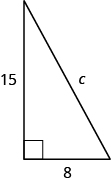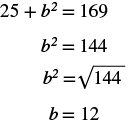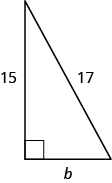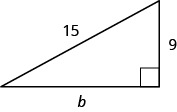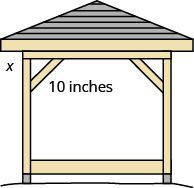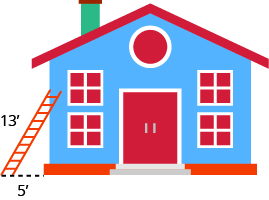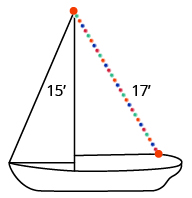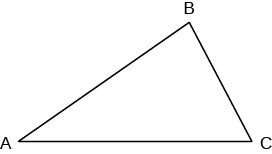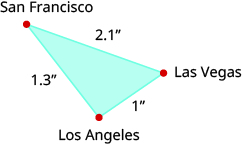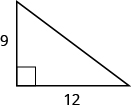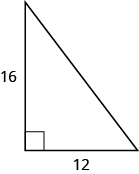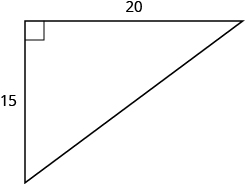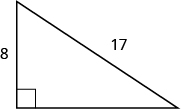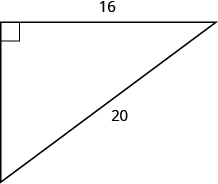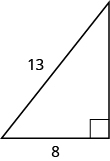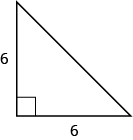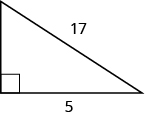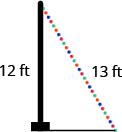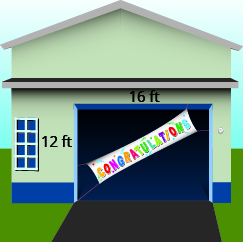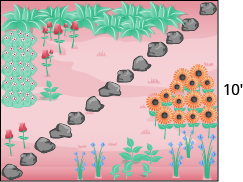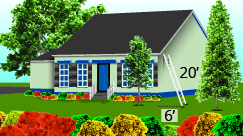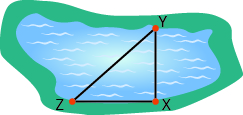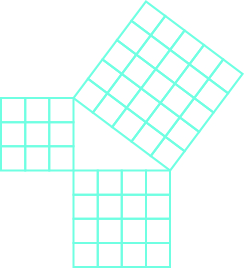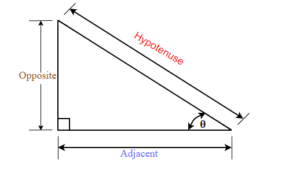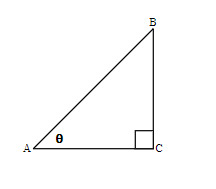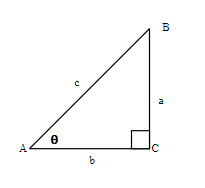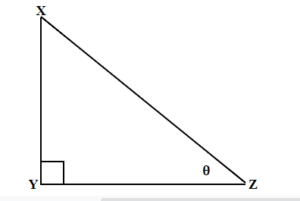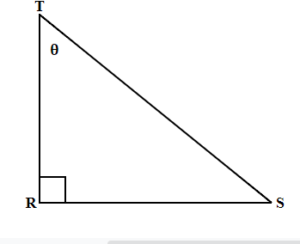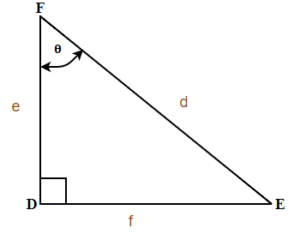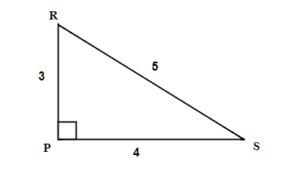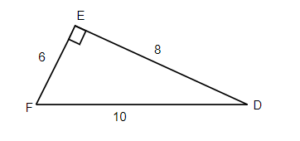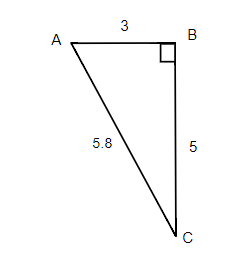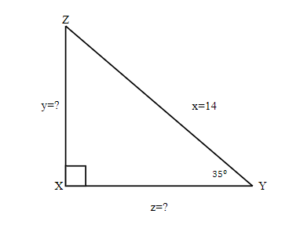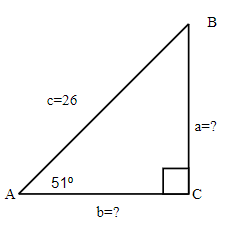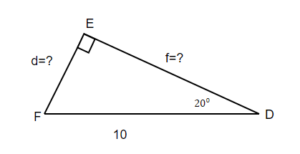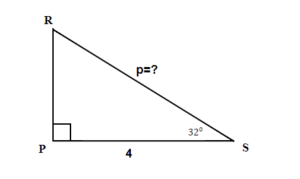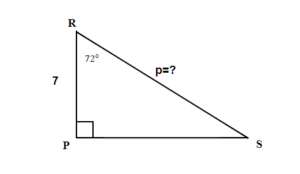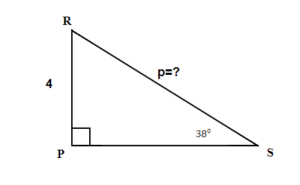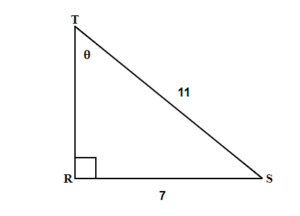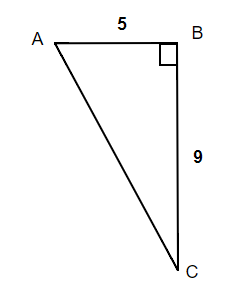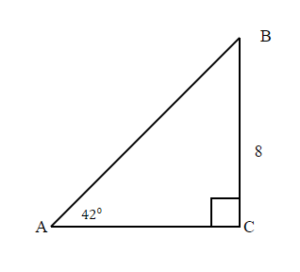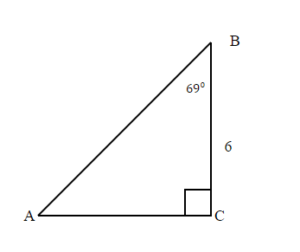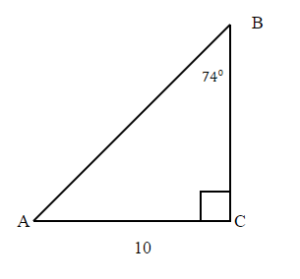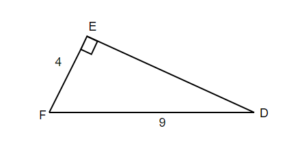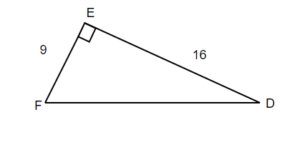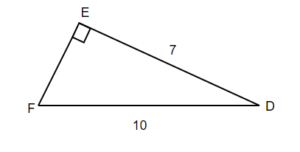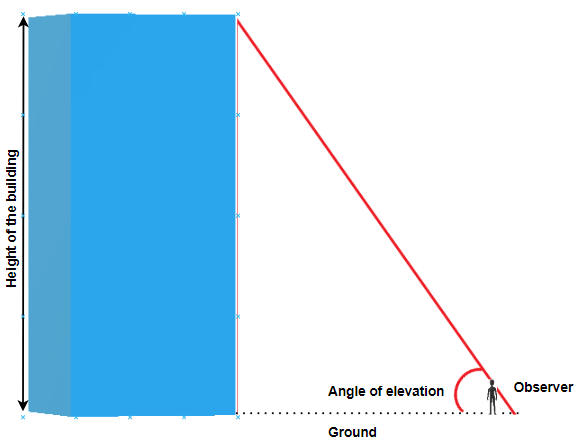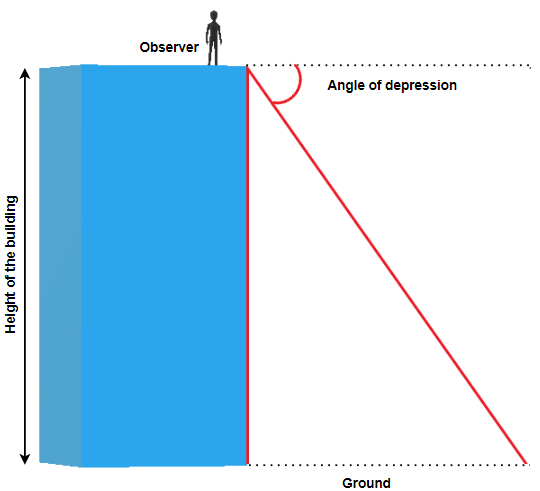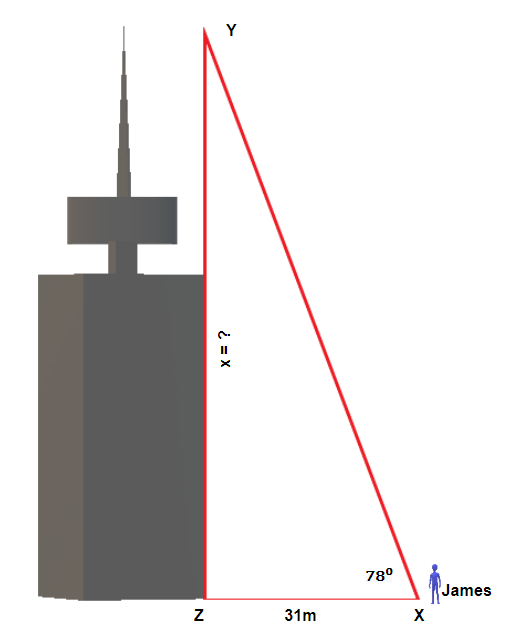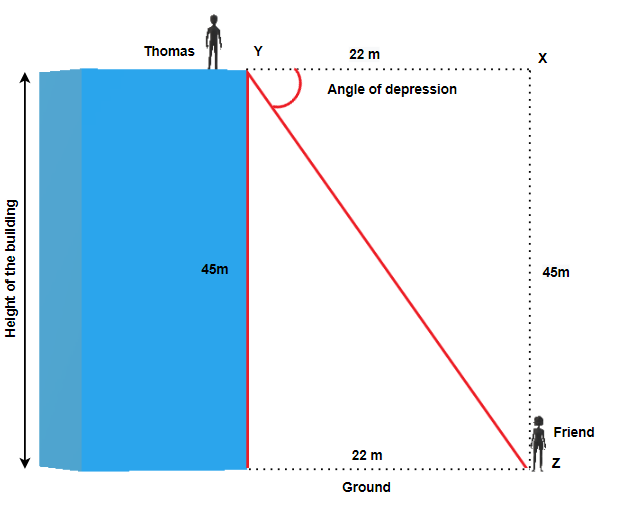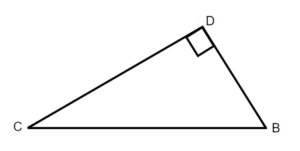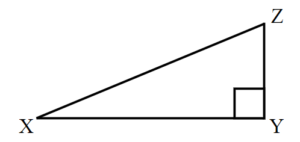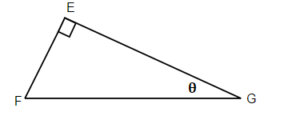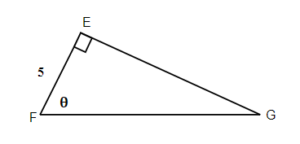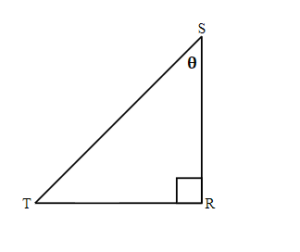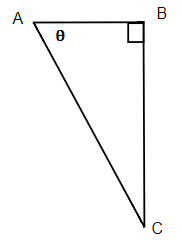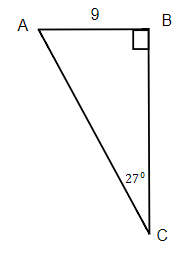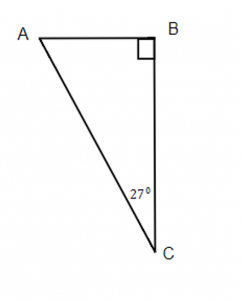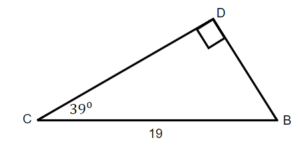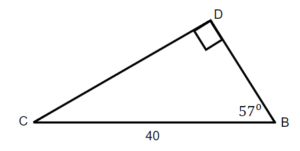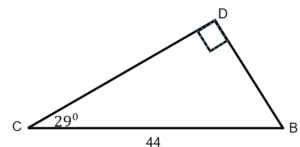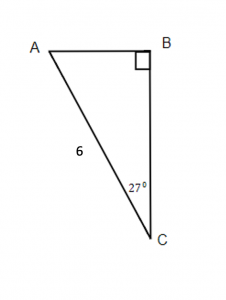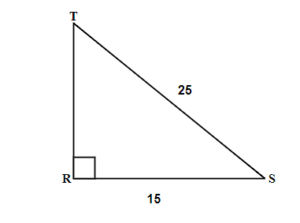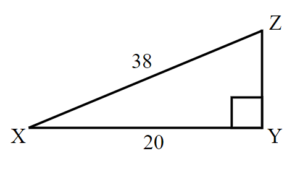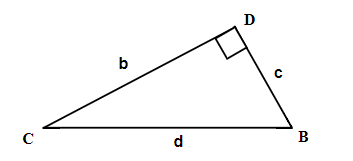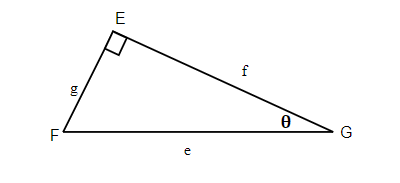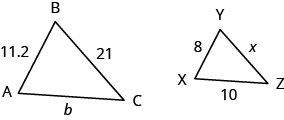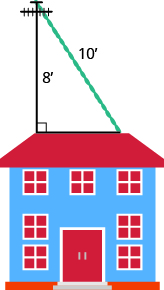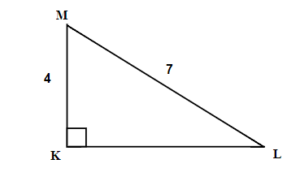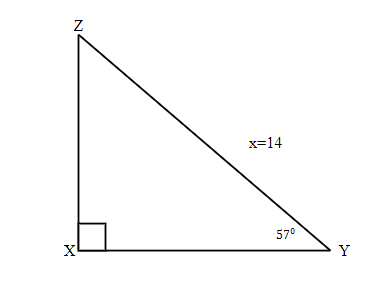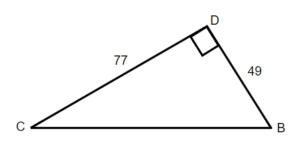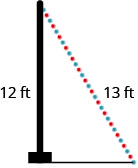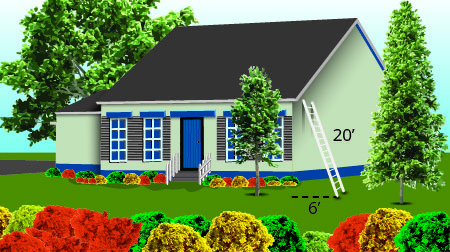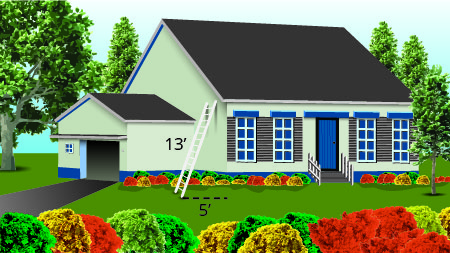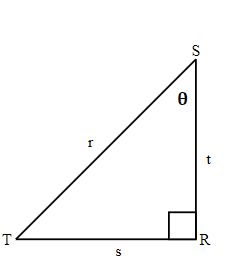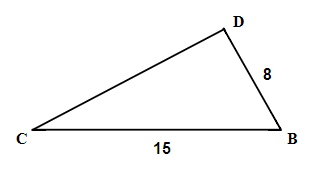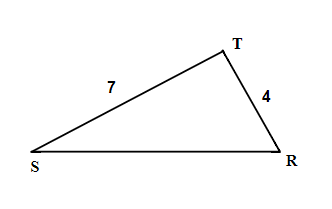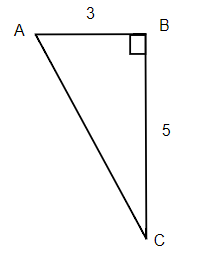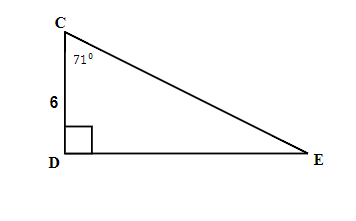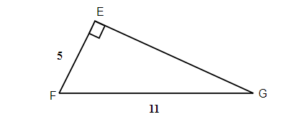By the end of this section, you will be able to:
- Use negatives and opposites
- Simplify: expressions with absolute value
- Add integers
- Subtract integers
Use Negatives and Opposites
Our work so far has only included the counting numbers and the whole numbers. But if you have ever experienced a temperature below zero or accidentally overdrawn your checking account, you are already familiar with negative numbers. Negative numbers are numbers less than  . The negative numbers are to the left of zero on the number line. See Figure 1.
. The negative numbers are to the left of zero on the number line. See Figure 1.

Figure 1 The number line shows the location of positive and negative numbers.
The arrows on the ends of the number line indicate that the numbers keep going forever. There is no biggest positive number, and there is no smallest negative number.
Is zero a positive or a negative number? Numbers larger than zero are positive, and numbers smaller than zero are negative. Zero is neither positive nor negative.
Consider how numbers are ordered on the number line. Going from left to right, the numbers increase in value. Going from right to left, the numbers decrease in value. See Figure 2.
Remember that we use the notation:
a < b (read “a is less than b”) when a is to the left of b on the number line.
a > b (read “a is greater than b”) when a is to the right of b on the number line.
Now we need to extend the number line which showed the whole numbers to include negative numbers, too. The numbers marked by points in Figure 3 are called the integers. The integers are the numbers 
Show answer
a) > b) < c) > d) >
Show answer
a) < b) > c) < d) >
You may have noticed that, on the number line, the negative numbers are a mirror image of the positive numbers, with zero in the middle. Because the numbers 2 and  are the same distance from zero, they are called opposites. The opposite of 2 is
are the same distance from zero, they are called opposites. The opposite of 2 is  , and the opposite of
, and the opposite of  is 2
is 2
The opposite of a number is the number that is the same distance from zero on the number line but on the opposite side of zero.
(Figure 4) illustrates the definition.
The opposite of 3 is  .
.
Sometimes in algebra the same symbol has different meanings. Just like some words in English, the specific meaning becomes clear by looking at how it is used. You have seen the symbol “−” used in three different ways.

 | Between two numbers, it indicates the operation of subtraction.
We read  as “10 minus 4.” as “10 minus 4.” |
 | In front of a number, it indicates a negative number.
We read −8 as “negative eight.” |
 | In front of a variable, it indicates the opposite. We read  as “the opposite of as “the opposite of  .” .” |
 | Here there are two “−” signs. The one in the parentheses tells us the number is negative 2. The one outside the parentheses tells us to take the opposite of −2.
We read  as “the opposite of negative two.” as “the opposite of negative two.” |
 means the opposite of the number a.
means the opposite of the number a.
The notation  is read as “the opposite of a.”
is read as “the opposite of a.”
Find: a) the opposite of 4 b) the opposite of  c)
c)  .
.
Show answer
a) b) 3 c) 1
b) 3 c) 1
Find: a) the opposite of 8 b) the opposite of  c)
c)  .
.
Show answer
a) b) 5 c) 5
b) 5 c) 5
Our work with opposites gives us a way to define the integers.The whole numbers and their opposites are called the integers. The integers are the numbers 
The whole numbers and their opposites are called the integers.
The integers are the numbers
When evaluating the opposite of a variable, we must be very careful. Without knowing whether the variable represents a positive or negative number, we don’t know whether  is positive or negative. We can see this in Example 3.
is positive or negative. We can see this in Example 3.
Show answer
a) b) 4
b) 4
Show answer
a) b) 11
b) 11
Simplify: Expressions with Absolute Value
We saw that numbers such as  are opposites because they are the same distance from 0 on the number line. They are both two units from 0. The distance between 0 and any number on the number line is called the absolute value of that number.
are opposites because they are the same distance from 0 on the number line. They are both two units from 0. The distance between 0 and any number on the number line is called the absolute value of that number.
The absolute value of a number is its distance from 0 on the number line.
The absolute value of a number n is written as  .
.
For example,
 units away from
units away from  , so
, so  .
. units away from
units away from  , so
, so  .
.
Figure 5 illustrates this idea.
The integers  units away from
units away from  .
.
The absolute value of a number is never negative (because distance cannot be negative). The only number with absolute value equal to zero is the number zero itself, because the distance from  on the number line is zero units.
on the number line is zero units.
 for all numbers
for all numbers
Absolute values are always greater than or equal to zero!
Mathematicians say it more precisely, “absolute values are always non-negative.” Non-negative means greater than or equal to zero.
Solution
The absolute value of a number is the distance between the number and zero. Distance is never negative, so the absolute value is never negative.
a) 

b) 

c) 

Show answer
a) 4 b) 28 c) 0
Show answer
a) 13 b) 47 c) 0
In the next example, we’ll order expressions with absolute values. Remember, positive numbers are always greater than negative numbers!
Show answer
a) > b) > c) < d) >
Show answer
a) > b) > c) > d) <
We now add absolute value bars to our list of grouping symbols. When we use the order of operations, first we simplify inside the absolute value bars as much as possible, then we take the absolute value of the resulting number.
Grouping Symbols | Parentheses | ( ) |
| Brackets | [ ] |
| Braces | { } |
| Absolute value | | | |
In the next example, we simplify the expressions inside absolute value bars first, just like we do with parentheses.
Simplify:  .
.
Simplify:  .
.
Simplify:  .
.
Add Integers
Most students are comfortable with the addition and subtraction facts for positive numbers. But doing addition or subtraction with both positive and negative numbers may be more challenging.
We will use two colour counters to model addition and subtraction of negatives so that you can visualize the procedures instead of memorizing the rules.
We let one colour (blue) represent positive. The other colour (red) will represent the negatives. If we have one positive counter and one negative counter, the value of the pair is zero. They form a neutral pair. The value of this neutral pair is zero.

We will use the counters to show how to add the four addition facts using the numbers  and
and  .
.

To add  , we realize that
, we realize that  means the sum of 5 and 3
means the sum of 5 and 3
| We start with 5 positives. |  |
| And then we add 3 positives. |  |
| We now have 8 positives. The sum of 5 and 3 is 8. |  |
Now we will add  . Watch for similarities to the last example
. Watch for similarities to the last example  .
.
To add  , we realize this means the sum of
, we realize this means the sum of  .
.
| We start with 5 negatives. |  |
| And then we add 3 negatives. |  |
| We now have 8 negatives. The sum of −5 and −3 is −8. |  |
In what ways were these first two examples similar?
- The first example adds 5 positives and 3 positives—both positives.
- The second example adds 5 negatives and 3 negatives—both negatives.
In each case we got 8—either 8 positives or 8 negatives.
When the signs were the same, the counters were all the same color, and so we added them.

Add: a)  b)
b)  .
.
Solution
a)

1 positive plus 4 positives is 5 positives.
b)

1 negative plus 4 negatives is 5 negatives.
Add: a)  b)
b)  .
.
Show answer
a) 6 b) 
Add: a)  b)
b)  .
.
Show answer
a) 7 b) 
So what happens when the signs are different? Let’s add  . We realize this means the sum of
. We realize this means the sum of  and 3. When the counters were the same color, we put them in a row. When the counters are a different color, we line them up under each other.
and 3. When the counters were the same color, we put them in a row. When the counters are a different color, we line them up under each other.
| −5 + 3 means the sum of −5 and 3. |
| We start with 5 negatives. |  |
| And then we add 3 positives. |  |
| We remove any neutral pairs. |  |
| We have 2 negatives left. |  |
| The sum of −5 and 3 is −2. | −5 + 3 = −2 |
Notice that there were more negatives than positives, so the result was negative.
Let’s now add the last combination,  .
.
| 5 + (−3) means the sum of 5 and −3. |
| We start with 5 positives. |  |
| And then we add 3 negatives. |  |
| We remove any neutral pairs. |  |
| We have 2 positives left. |  |
| The sum of 5 and −3 is 2. | 5 + (−3) = 2 |
When we use counters to model addition of positive and negative integers, it is easy to see whether there are more positive or more negative counters. So we know whether the sum will be positive or negative.

Add: a)  b)
b)  .
.
Solution
a)
| −1 + 5 |
|  |
| There are more positives, so the sum is positive. | 4 |
b)
| 1 + (−5) |
|  |
| There are more negatives, so the sum is negative. | −4 |
Add: a)  b)
b)  .
.
Show answer
a) 2 b) 
Add: a)  b)
b)  .
.
Show answer
a) 3 b) 
Now that we have added small positive and negative integers with a model, we can visualize the model in our minds to simplify problems with any numbers.
When you need to add numbers such as  , you really don’t want to have to count out 37 blue counters and 53 red counters. With the model in your mind, can you visualize what you would do to solve the problem?
, you really don’t want to have to count out 37 blue counters and 53 red counters. With the model in your mind, can you visualize what you would do to solve the problem?
Picture 37 blue counters with 53 red counters lined up underneath. Since there would be more red (negative) counters than blue (positive) counters, the sum would be negative. How many more red counters would there be? Because  , there are 16 more red counters.
, there are 16 more red counters.
Therefore, the sum of  is
is  .
.
Let’s try another one. We’ll add  . Again, imagine 74 red counters and 27 more red counters, so we’d have 101 red counters. This means the sum is
. Again, imagine 74 red counters and 27 more red counters, so we’d have 101 red counters. This means the sum is  .
.

Let’s look again at the results of adding the different combinations of  and
and  .
.
When the signs are the same, the counters would be all the same color, so add them.

When the signs are different, some of the counters would make neutral pairs, so subtract to see how many are left.
Visualize the model as you simplify the expressions in the following examples.
Simplify: a)  b)
b)  .
.
Solution
- Since the signs are different, we subtract
 The answer will be negative because there are more negatives than positives.
The answer will be negative because there are more negatives than positives.

- Since the signs are the same, we add. The answer will be negative because there are only negatives.

Simplify: a)  b)
b)  .
.
Show answer
a) b)
b)
Simplify: a)  b)
b)  .
.
Show answer
a) b)
b)
The techniques used up to now extend to more complicated problems, like the ones we’ve seen before. Remember to follow the order of operations!
Simplify:  .
.
Solution
|  |
| Simplify inside the parentheses. |  |
| Multiply. |  |
| Add left to right. |  |
Simplify:  .
.
Simplify:  .
.
Subtract Integers
We will continue to use counters to model the subtraction. Remember, the blue counters represent positive numbers and the red counters represent negative numbers.
Perhaps when you were younger, you read  as
as  take away
take away  When you use counters, you can think of subtraction the same way!
When you use counters, you can think of subtraction the same way!
We will model the four subtraction facts using the numbers  and
and  .
.
To subtract  , we restate the problem as
, we restate the problem as  take away
take away 
| We start with 5 positives. |  |
| We ‘take away’ 3 positives. |  |
| We have 2 positives left. | |
| The difference of 5 and 3 is 2. | 2 |
Now we will subtract  . Watch for similarities to the last example
. Watch for similarities to the last example  .
.
To subtract  , we restate this as
, we restate this as  take away
take away 
| We start with 5 negatives. |  |
| We ‘take away’ 3 negatives. |  |
| We have 2 negatives left. | |
| The difference of −5 and −3 is −2. | −2 |
Notice that these two examples are much alike: The first example, we subtract 3 positives from 5 positives and end up with 2 positives.
In the second example, we subtract 3 negatives from 5 negatives and end up with 2 negatives.
Each example used counters of only one color, and the “take away” model of subtraction was easy to apply.

Subtract: a)  b)
b)  .
.
Solution
a)
Take 5 positive from 7 positives and get 2 positives. |  |
b)
Take 5 negatives from 7 negatives and get 2 negatives. |  |
Subtract: a)  b)
b)  .
.
Show answer
a) 2 b) 
Subtract: a)  b)
b)  .
.
Show answer
a) 3 b) 
What happens when we have to subtract one positive and one negative number? We’ll need to use both white and red counters as well as some neutral pairs. Adding a neutral pair does not change the value. It is like changing quarters to nickels—the value is the same, but it looks different.
- To subtract
 , we restate it as
, we restate it as  take away 3.
take away 3.
We start with 5 negatives. We need to take away 3 positives, but we do not have any positives to take away.
Remember, a neutral pair has value zero. If we add 0 to 5 its value is still 5. We add neutral pairs to the 5 negatives until we get 3 positives to take away.
| −5 − 3 means −5 take away 3. |
| We start with 5 negatives. |  |
| We now add the neutrals needed to get 3 positives. |  |
| We remove the 3 positives. |  |
| We are left with 8 negatives. |  |
| The difference of −5 and 3 is −8. | −5 − 3 = −8 |
And now, the fourth case,  . We start with 5 positives. We need to take away 3 negatives, but there are no negatives to take away. So we add neutral pairs until we have 3 negatives to take away.
. We start with 5 positives. We need to take away 3 negatives, but there are no negatives to take away. So we add neutral pairs until we have 3 negatives to take away.
| 5 − (−3) means 5 take away −3. |
| We start with 5 positives. |  |
| We now add the needed neutrals pairs. |  |
| We remove the 3 negatives. |  |
| We are left with 8 positives. |  |
| The difference of 5 and −3 is 8. | 5 − (−3) = 8 |
Subtract: a)  b)
b)  .
.
Solution
a)
| Take 1 positive from the one added neutral pair. | 
 | −3 − 1 −4 |
b)
| Take 1 negative from the one added neutral pair. | 
 | 3 − (−1) 4 |
Subtract: a)  b)
b)  .
.
Show answer
a) b) 10
b) 10
Subtract: a)  b)
b)  .
.
Show answer
a) b) 11
b) 11
Have you noticed that subtraction of signed numbers can be done by adding the opposite? In Example 13,  is the same as
is the same as  and
and  is the same as
is the same as  . You will often see this idea, the subtraction property, written as follows:
. You will often see this idea, the subtraction property, written as follows:
Subtracting a number is the same as adding its opposite.
Look at these two examples.
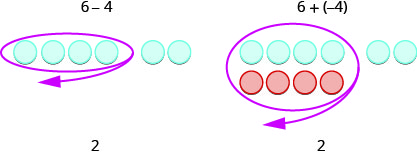

.
Of course, when you have a subtraction problem that has only positive numbers, like  , you just do the subtraction. You already knew how to subtract
, you just do the subtraction. You already knew how to subtract  long ago. But knowing that
long ago. But knowing that  gives the same answer as
gives the same answer as  helps when you are subtracting negative numbers. Make sure that you understand how
helps when you are subtracting negative numbers. Make sure that you understand how  and
and  give the same results!
give the same results!
Solution
a)
Subtract. |  |  |
b)
Subtract. |  |  |
Show answer
a)  b)
b) 
Show answer
a)  b)
b)
Look at what happens when we subtract a negative.

Subtracting a negative number is like adding a positive!
You will often see this written as  .
.
Does that work for other numbers, too? Let’s do the following example and see.
Solution
a)

b)

a)
Subtract. |  |  |
b)
Subtract. |  |  |
Show answer
a) b)
b)
Let’s look again at the results of subtracting the different combinations of  and
and  .
.

When there would be enough counters of the colour to take away, subtract.
When there would be not enough counters of the colour to take away, add.
What happens when there are more than three integers? We just use the order of operations as usual.
Simplify:  .
.
Solution
|  |
| Simplify inside the parentheses first. |  |
| Subtract left to right. |  |
| Subtract. |  |
Simplify:  .
.
Simplify:  .
.
Key Concepts
- Addition of Positive and Negative Integers

- Property of Absolute Value:
 for all numbers. Absolute values are always greater than or equal to zero!
for all numbers. Absolute values are always greater than or equal to zero! - Subtraction of Integers

- Subtraction Property: Subtracting a number is the same as adding its opposite.
Glossary
- absolute value
- The absolute value of a number is its distance from 0 on the number line. The absolute value of a number
 is written as
is written as  .
.
- integers
- The whole numbers and their opposites are called the integers: …−3, −2, −1, 0, 1, 2, 3…
- opposite
- The opposite of a number is the number that is the same distance from zero on the number line but on the opposite side of zero:
 means the opposite of the number. The notation
means the opposite of the number. The notation  is read “the opposite of
is read “the opposite of  .”
.”
Practice Makes Perfect
Use Negatives and Opposites of Integers
In the following exercises, order each of the following pairs of numbers, using < or >.
1.
a)  ___ ___
b)  ___ ___
c)  ___ ___
d)  ___ ___ | 2.
a)  ___ ___
b)  ___ ___
c)  ___ ___
d)  ___ ___ |
In the following exercises, find the opposite of each number.
3.
a) 2
b)  | 4.
a) 9
b)  |
In the following exercises, simplify.
In the following exercises, evaluate.
9.  when when
a) 
b)  | 10.  when when
a) 
b)  |
Simplify Expressions with Absolute Value
In the following exercises, simplify.
11.
a) 
b) 
c)  | 12.
a) 
b) 
c)  |
In the following exercises, fill in <, >, or  for each of the following pairs of numbers.
for each of the following pairs of numbers.
13.
a)  ___ ___
b)  ___ ___ | 14.
a)  ___ ___
b)  ___ ___ |
In the following exercises, simplify.
15.  | 16.  |
17.  | 18.  |
19.  | 20.  |
21.  | 22.  |
In the following exercises, evaluate.
Add Integers
In the following exercises, simplify each expression.
25.  | 26.  |
27.  | 28.  |
29.  | 30.  |
31.  | 32. 6  |
33.  | 34.  |
Subtract Integers
In the following exercises, simplify.
35.  | 36.  |
37.  | 38.  |
39.  | 40.  |
41.
a) 
b)  | 42.
a) 
b)  |
43.
a) 
b)  | 44.
a) 
b)  |
In the following exercises, simplify each expression.
45.  | 46.  |
47.  | 48.  |
49.  | 50.  |
51.  | 52.  |
53.  | 54.  |
55.  | 56.  |
57.  | 58.  |
59.  | 60.  |
61.  | 62.  |
63.  | 64.  |
65. ![Rendered by QuickLaTeX.com 25-\left[10-\left(3-12\right)\right]](https://opentextbc.ca/introalgebra/wp-content/ql-cache/quicklatex.com-93bff9c2baf995720da4030aee245f22_l3.svg) | 66. ![Rendered by QuickLaTeX.com 32-\left[5-\left(15-20\right)\right]](https://opentextbc.ca/introalgebra/wp-content/ql-cache/quicklatex.com-cb825f53789b236f424ae01b5da9a187_l3.svg) |
67.  | 68.  |
69.  | 70.  |
Everyday Math
71. Elevation The highest elevation in North America is Mount McKinley, Alaska, at 20,320 feet above sea level. The lowest elevation is Death Valley, California, at 282 feet below sea level. Use integers to write the elevation of: a) Mount McKinley.
b) Death Valley. | 72. Extreme temperatures The highest recorded temperature on Earth was  ° Celsius, recorded in the Sahara Desert in 1922. The lowest recorded temperature was ° Celsius, recorded in the Sahara Desert in 1922. The lowest recorded temperature was  ° below ° below  ° Celsius, recorded in Antarctica in 1983 ° Celsius, recorded in Antarctica in 1983 Use integers to write the: a) highest recorded temperature. b) lowest recorded temperature. |
73. Provincial budgets For 2019 the province of Quebec estimated it would have a budget surplus of $5.6 million. That same year, Alberta estimated it would have a budget deficit of $7.5 million. Use integers to write the budget of: a) Quebec.
b) Alberta. | 74. University enrolmentsThe number of international students enrolled in Canadian postsecondary institutions has been on the rise for two decades, with their numbers increasing at a higher rate than that of Canadian students. Enrolments of international students rose by 24,315 from 2015 to 2017. Meanwhile, there was a slight decline in the number of Canadian students, by 912 for the same fiscal years. Use integers to write the change: a) in International Student enrolment from Fall 2015 to Fall 2017. b) in Canadian student enrolment from Fall 2015 to Fall 2017. |
75. Stock Market The week of September 15, 2008 was one of the most volatile weeks ever for the US stock market. The closing numbers of the Dow Jones Industrial Average each day were: | 76. Stock Market During the week of June 22, 2009, the closing numbers of the Dow Jones Industrial Average each day were: | Monday |  | | Tuesday |  | | Wednesday |  | | Thursday |  | | Friday |  |
What was the overall change for the week? Was it positive or negative? |
Writing Exercises
| 77. Give an example of a negative number from your life experience. | 78. What are the three uses of the  sign in algebra? Explain how they differ. sign in algebra? Explain how they differ. |
79. Explain why the sum of  and 2 is negative, but the sum of 8 and and 2 is negative, but the sum of 8 and  is positive. is positive. | 80. Give an example from your life experience of adding two negative numbers. |
Answers

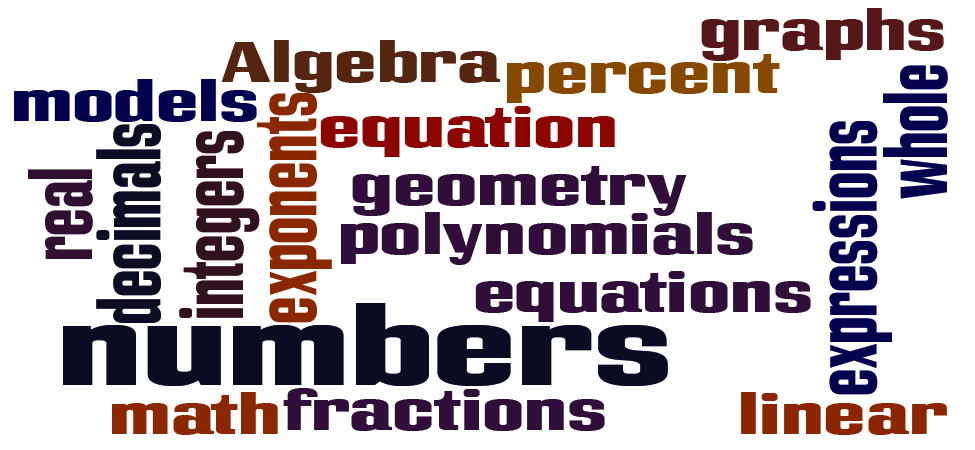

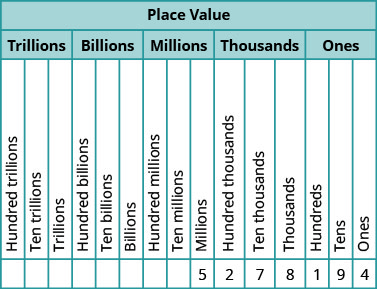
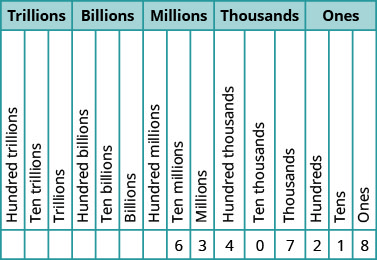











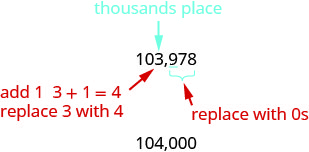








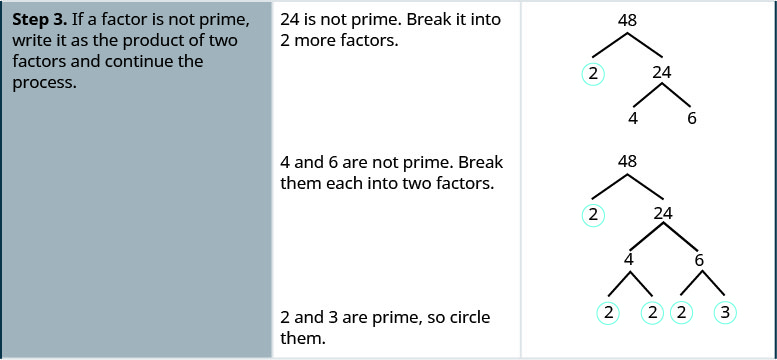


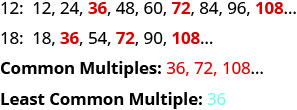












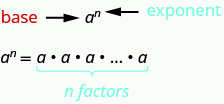





































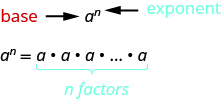






























































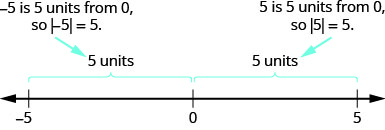
















































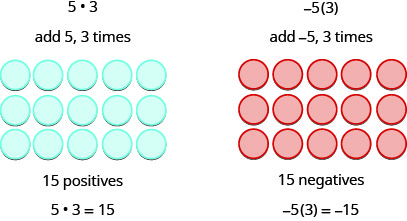
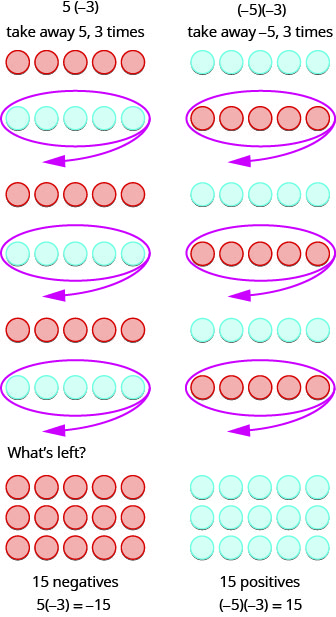

























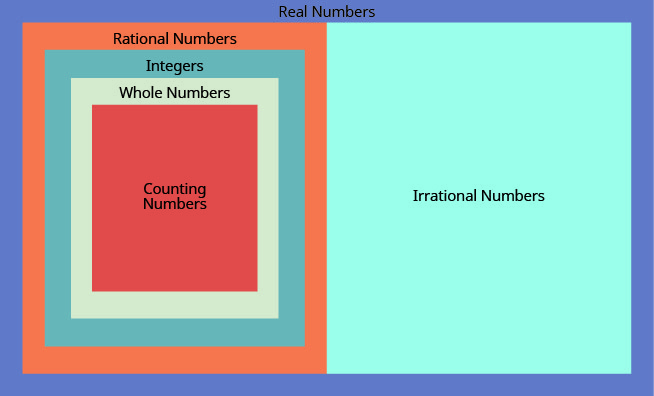
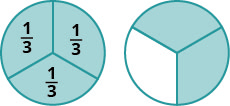

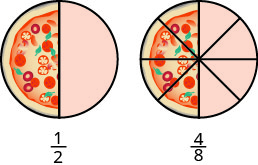
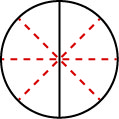
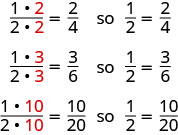










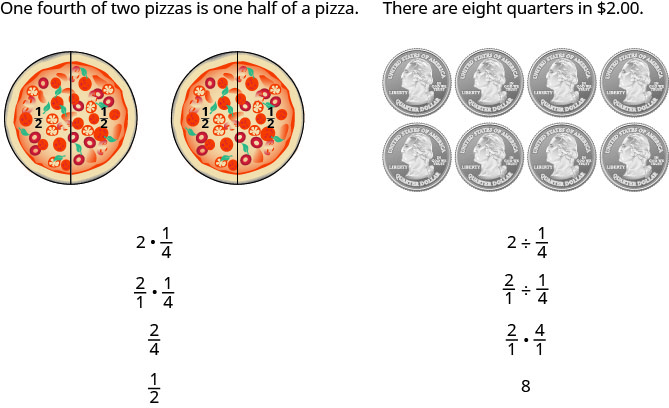


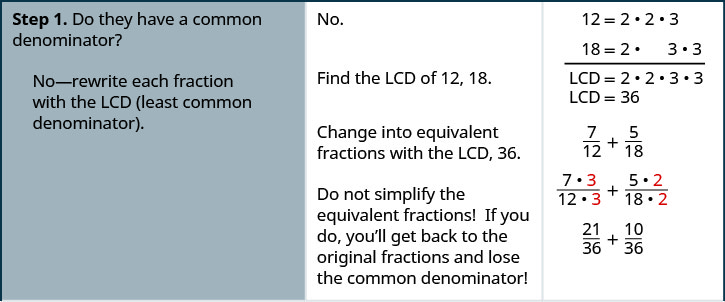


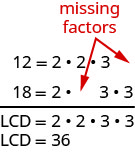
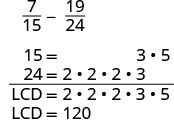



























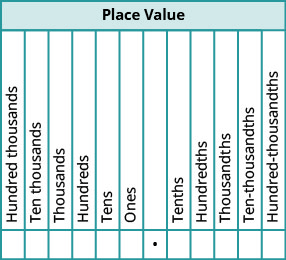




































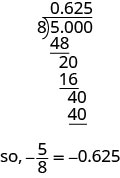
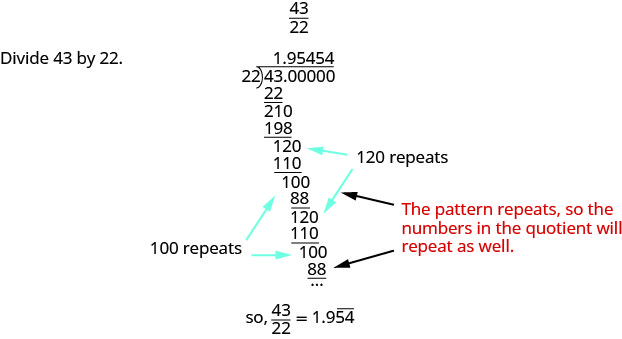






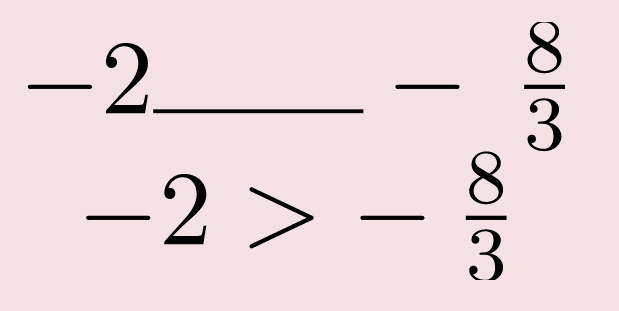










































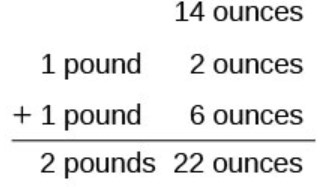













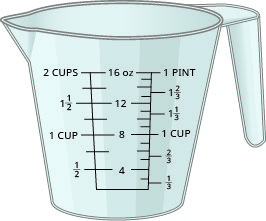
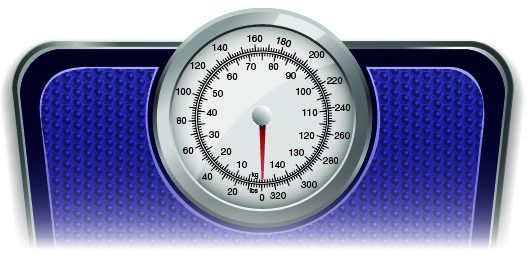
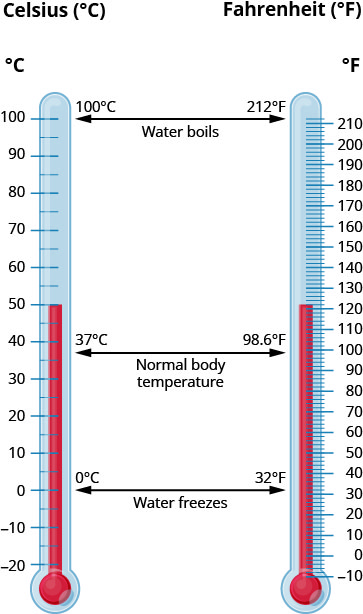












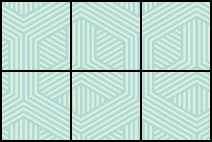
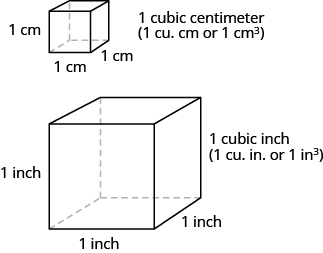

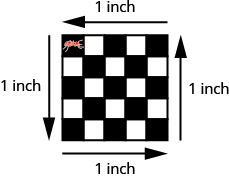




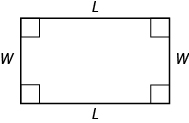
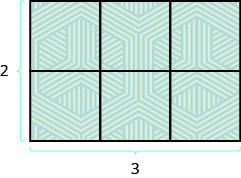
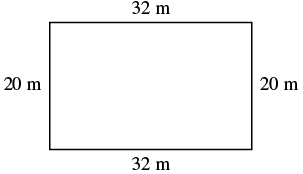



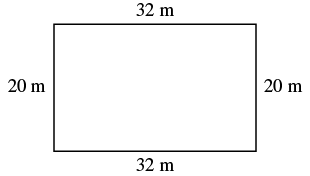


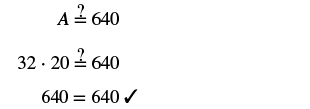
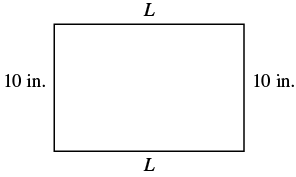

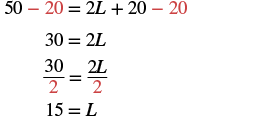

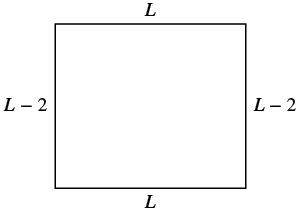


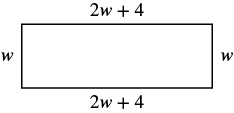

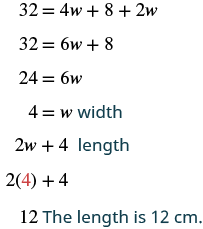





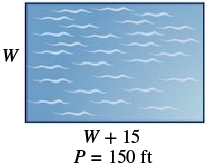

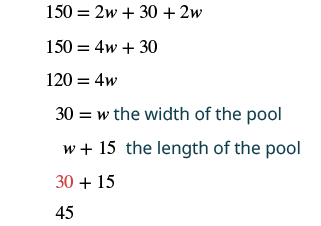




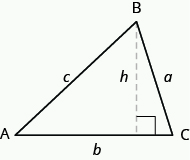
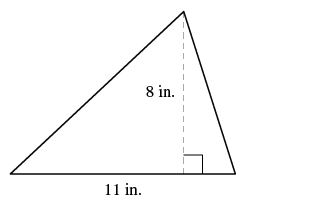
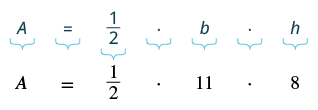

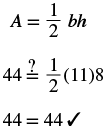
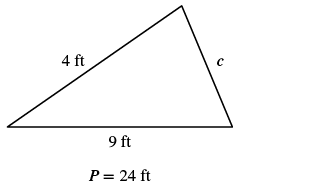



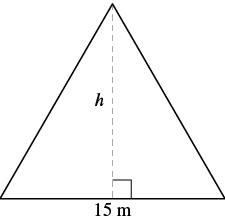


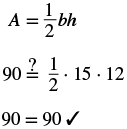
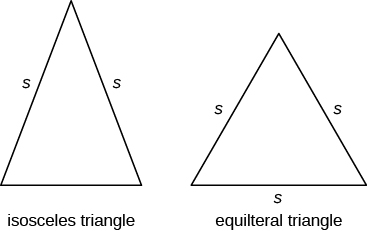
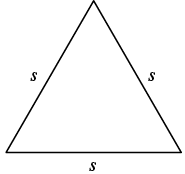


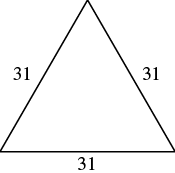





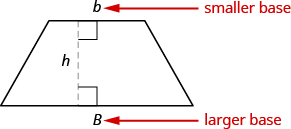
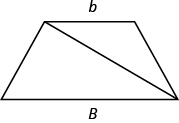
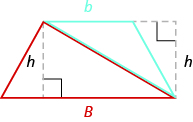


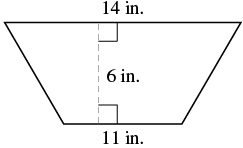

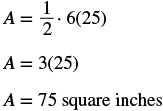

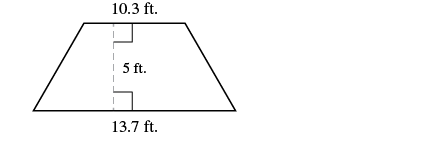


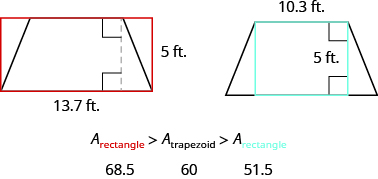

















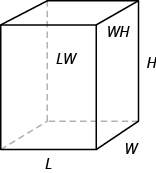
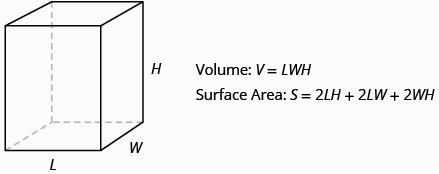
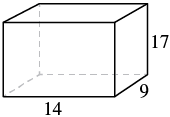
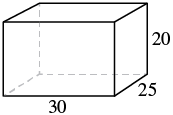
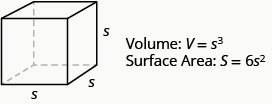

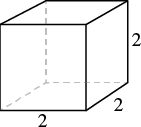

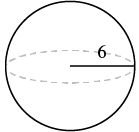
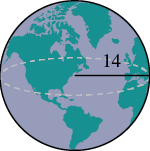
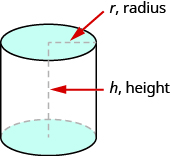
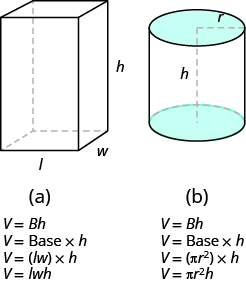
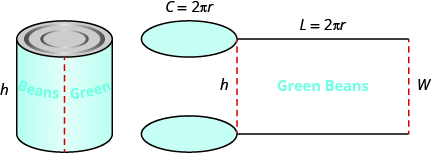

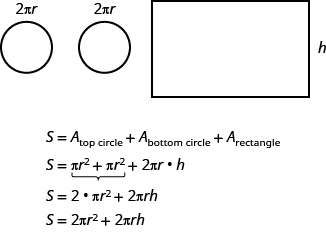
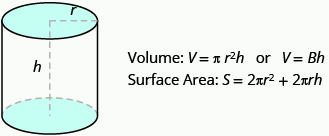
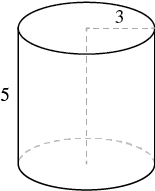
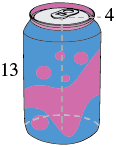
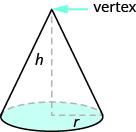
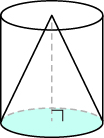


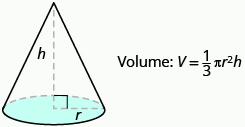
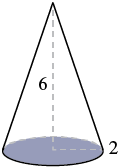
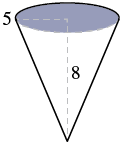
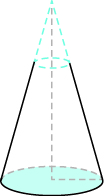
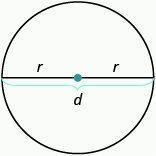
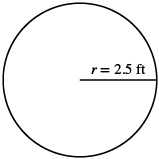
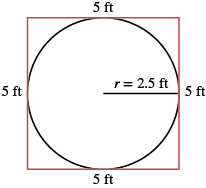

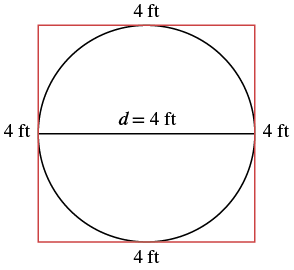
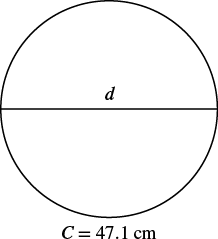





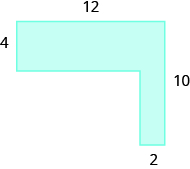
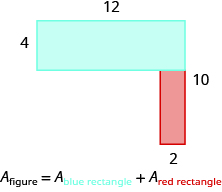

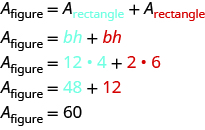
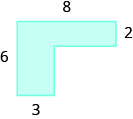
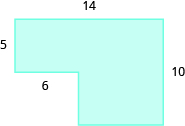
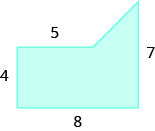
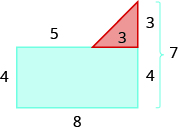
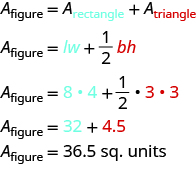

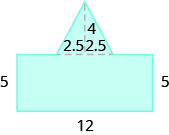

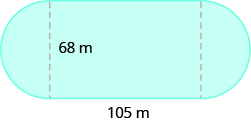
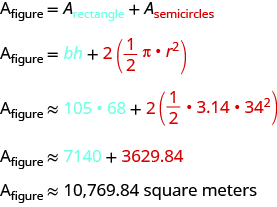

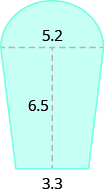
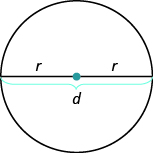
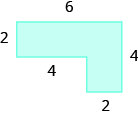
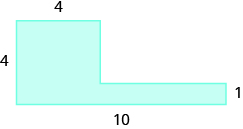
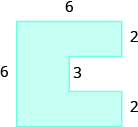
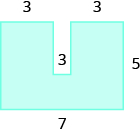
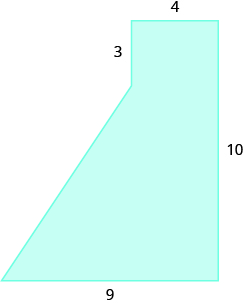
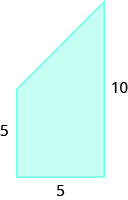

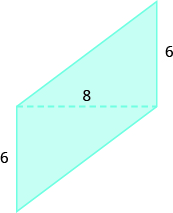
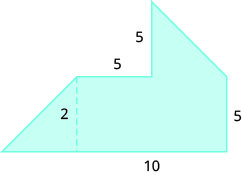
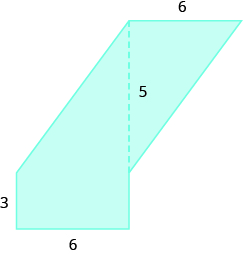
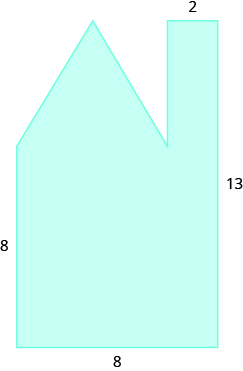

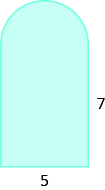
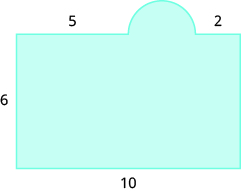
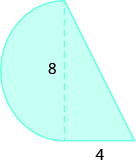

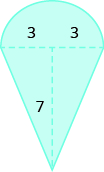
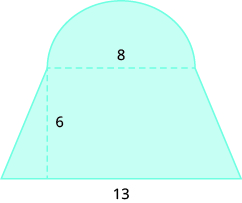
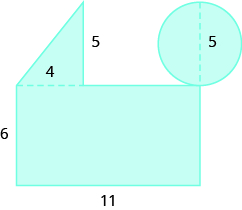
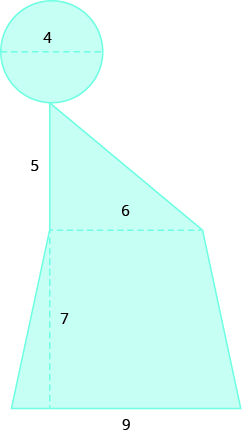

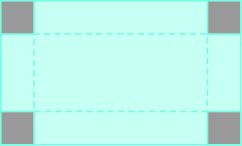
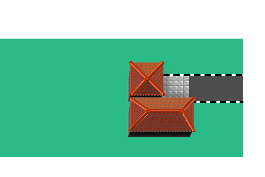
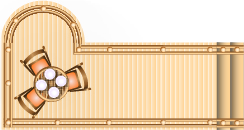
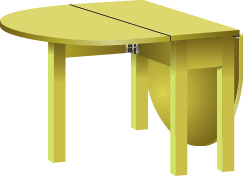
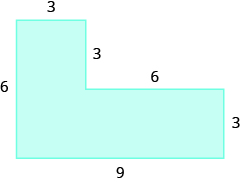


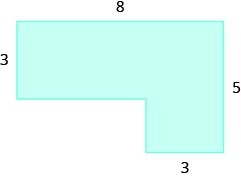
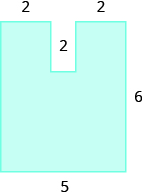
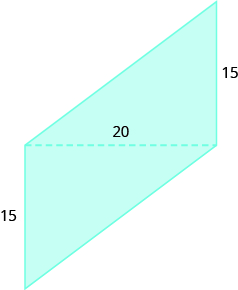
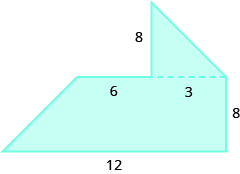
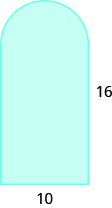
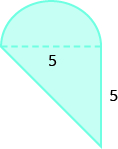
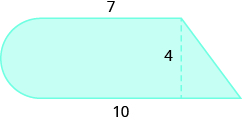



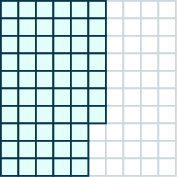
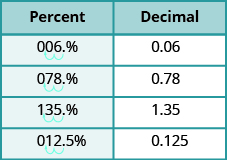
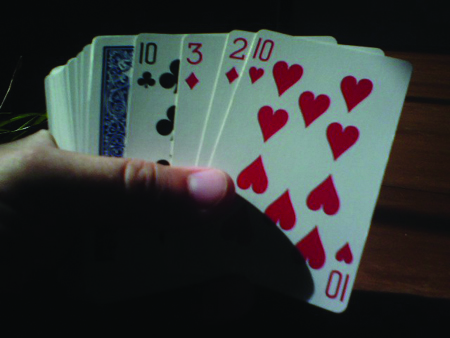










































































































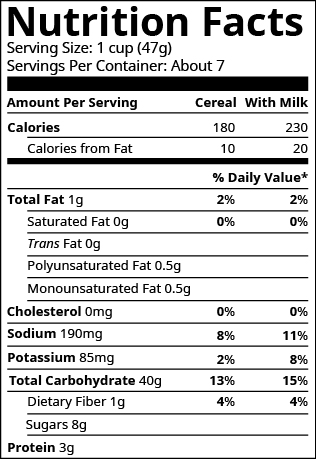























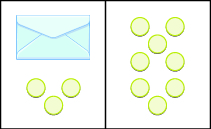
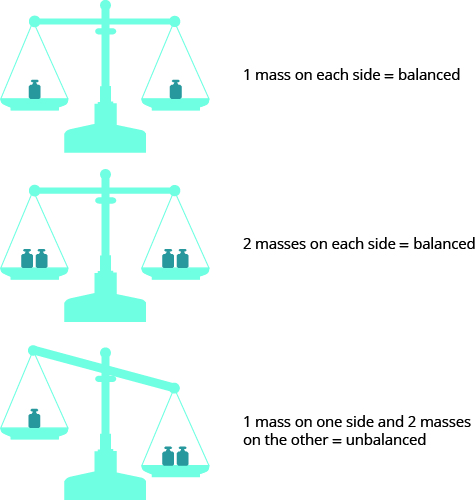
































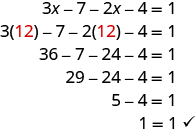






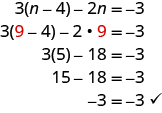






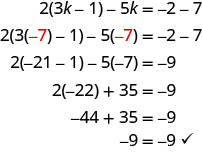

















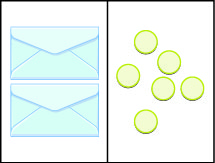
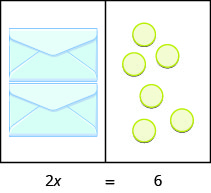






































































































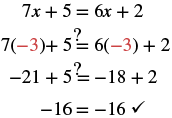















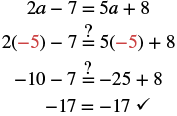





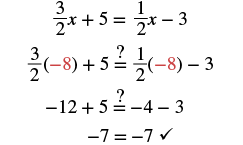







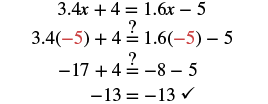






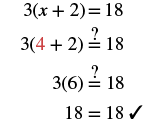

















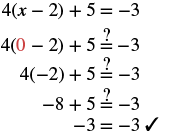







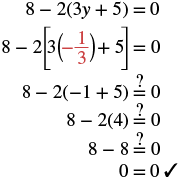









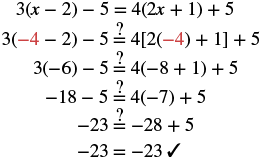








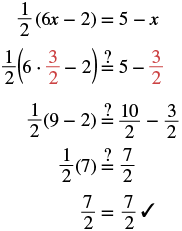








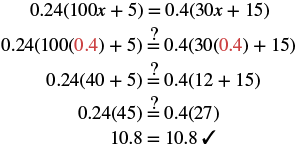













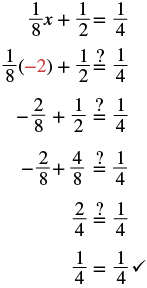







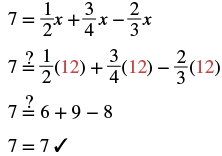










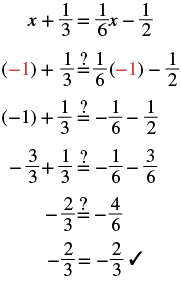







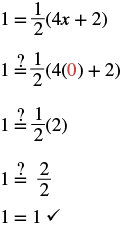



















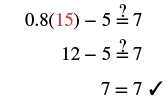




















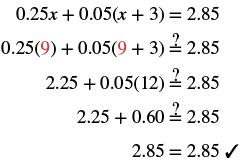
















































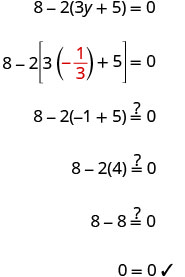















































































































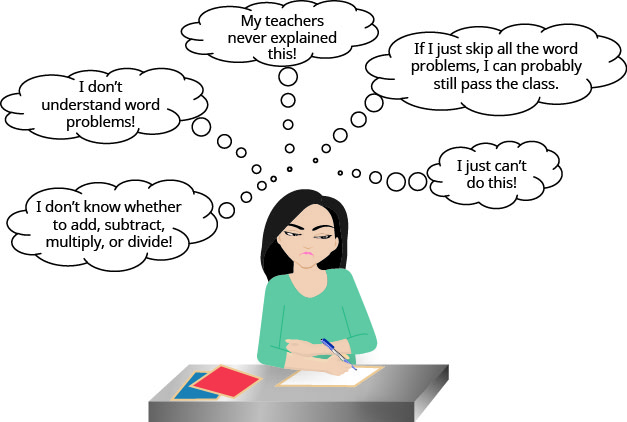








































































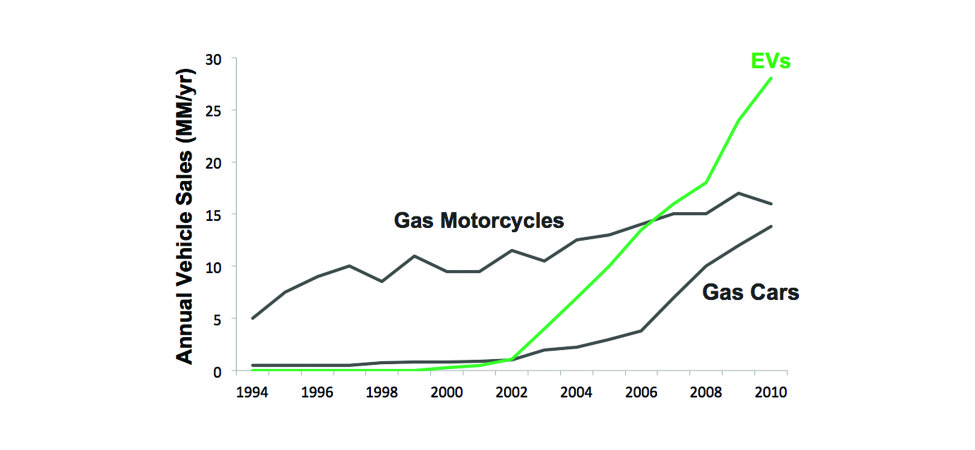 Graphs are found in all areas of our lives—from commercials showing you which cell phone carrier provides the best coverage, to bank statements and news articles, to the boardroom of major corporations. In this chapter, we will study the rectangular coordinate system, which is the basis for most consumer graphs. We will look at linear graphs, slopes of lines, and equations of lines.
Graphs are found in all areas of our lives—from commercials showing you which cell phone carrier provides the best coverage, to bank statements and news articles, to the boardroom of major corporations. In this chapter, we will study the rectangular coordinate system, which is the basis for most consumer graphs. We will look at linear graphs, slopes of lines, and equations of lines.

